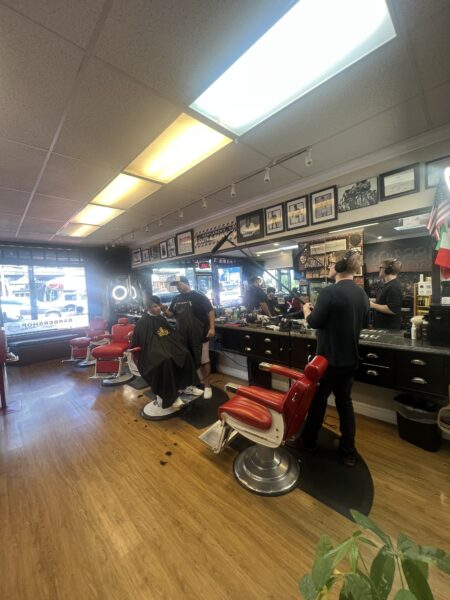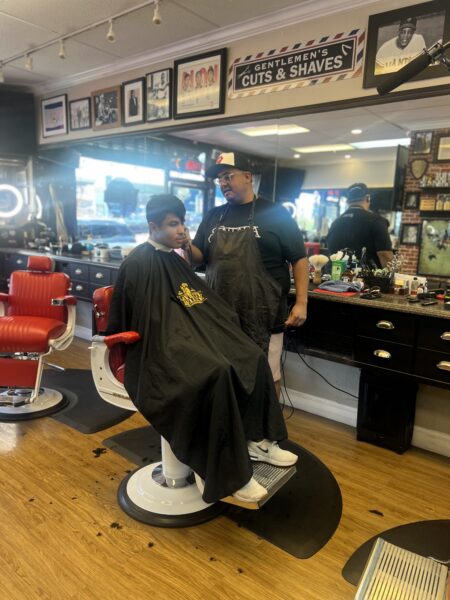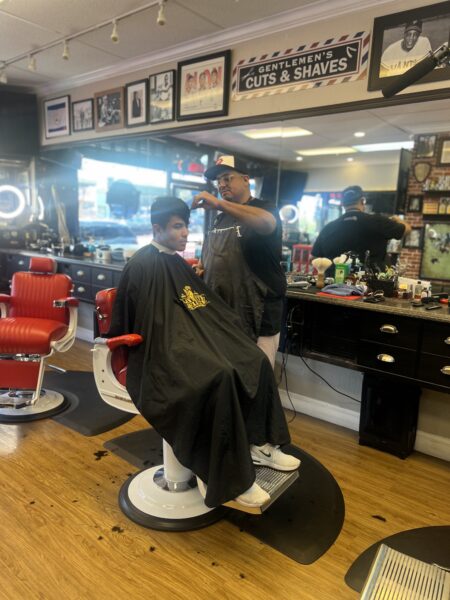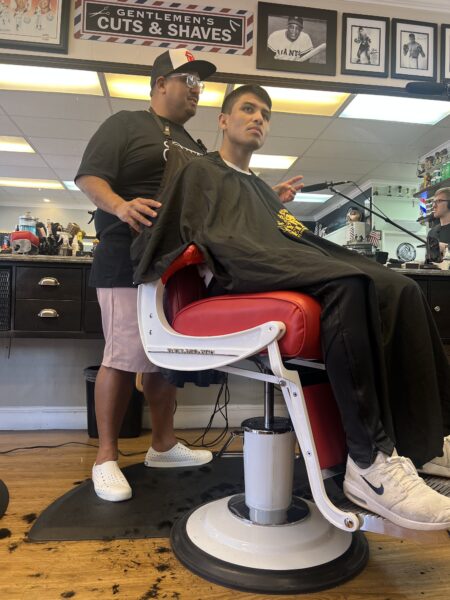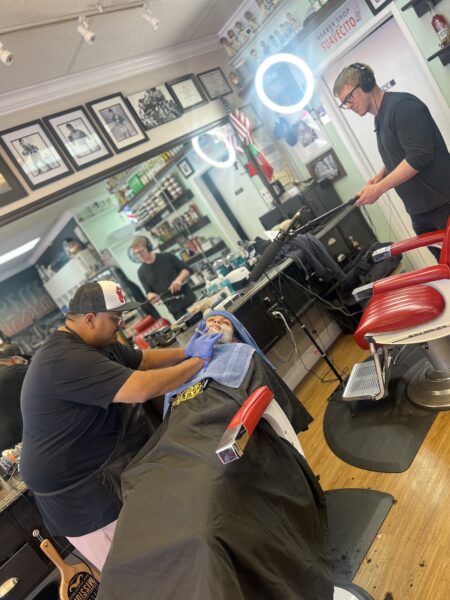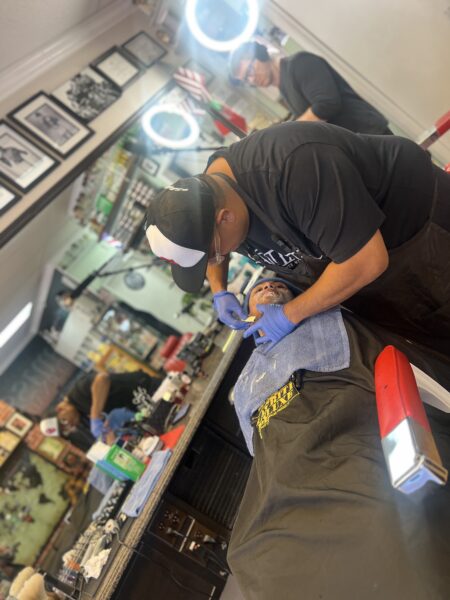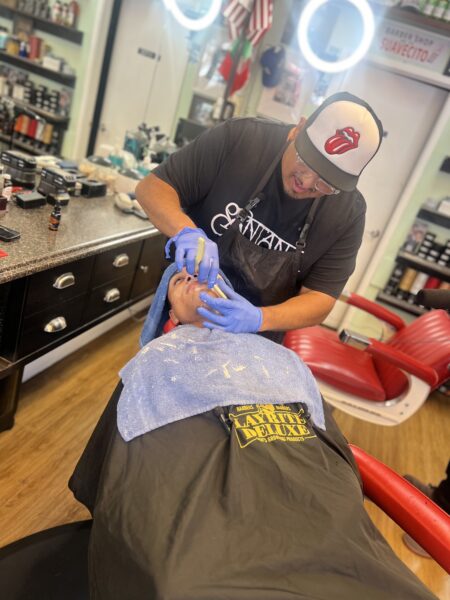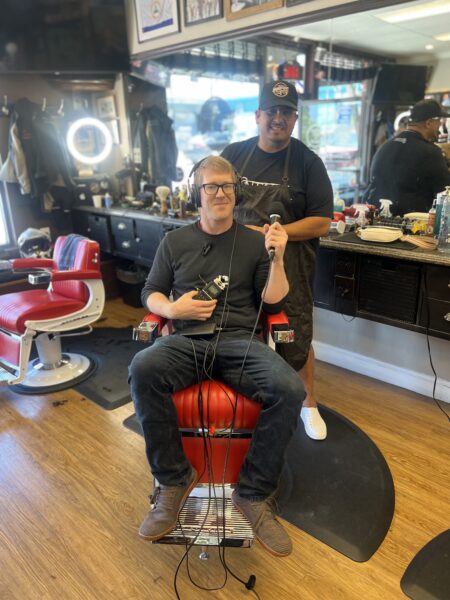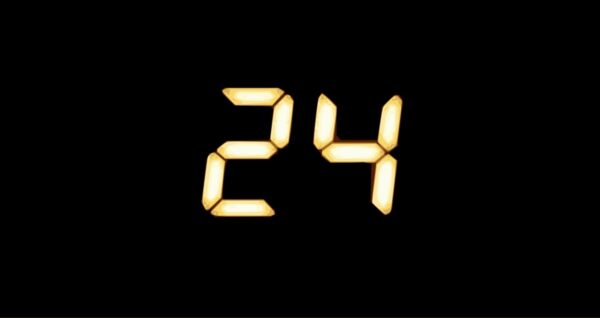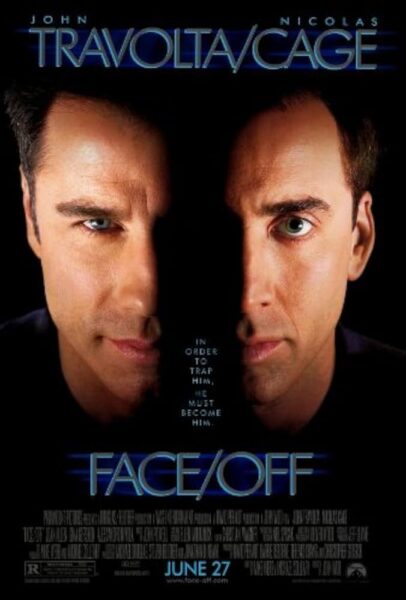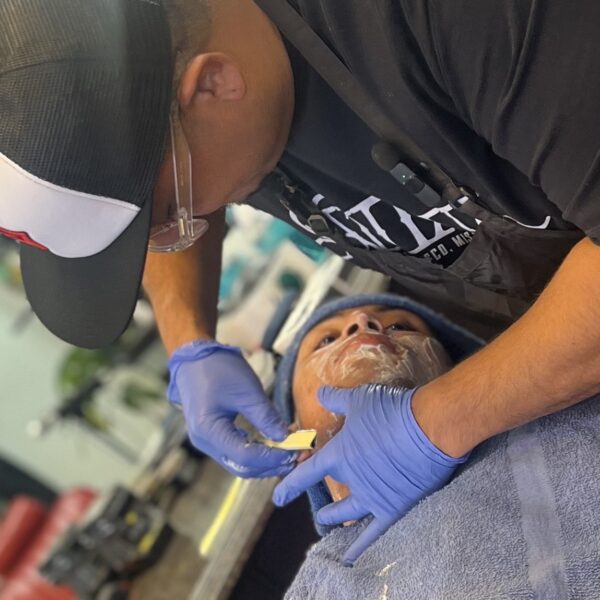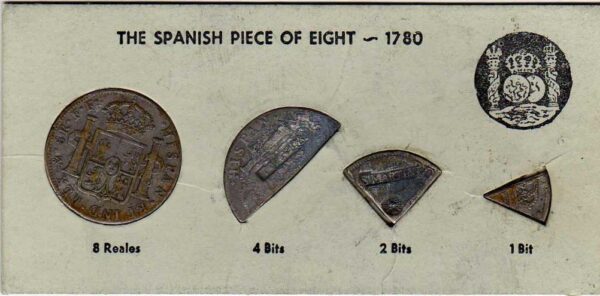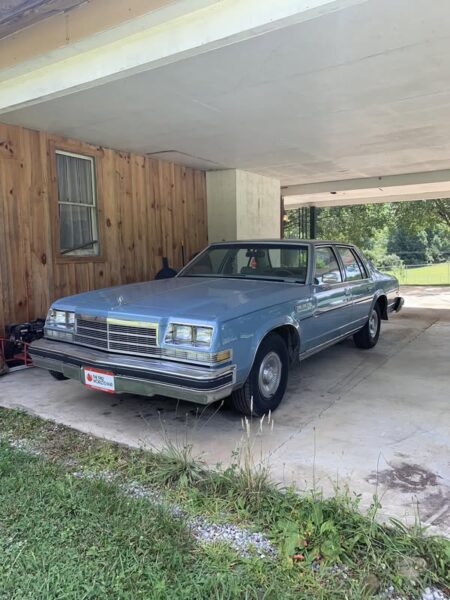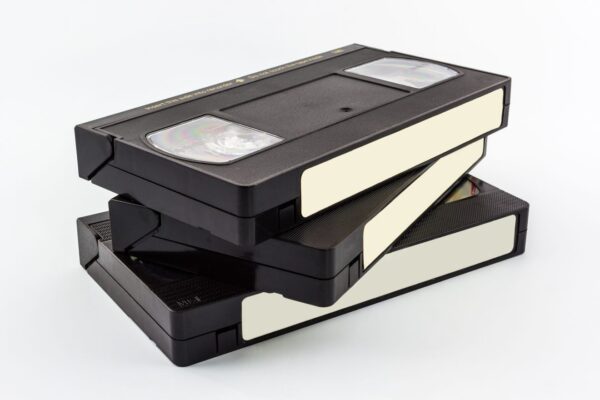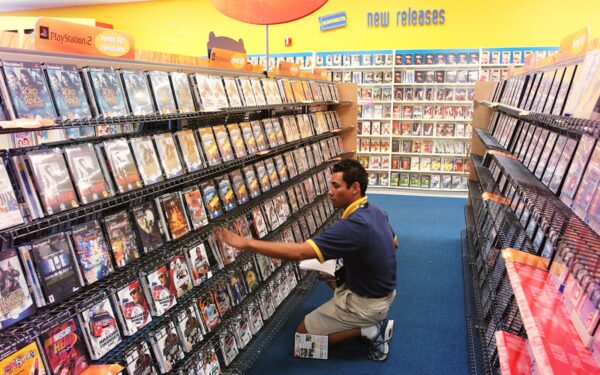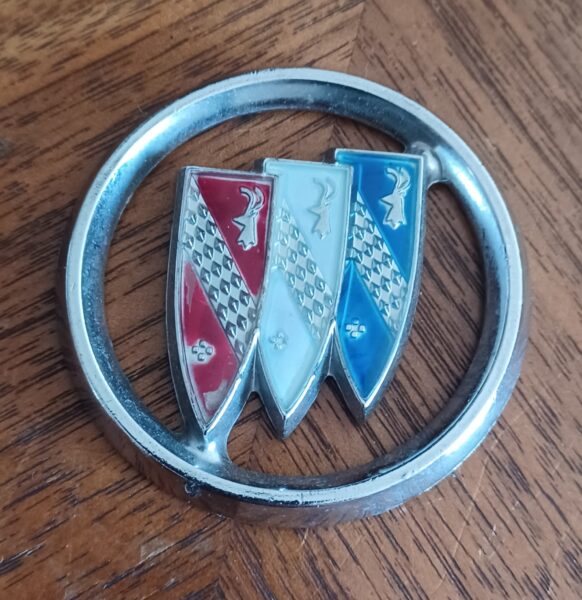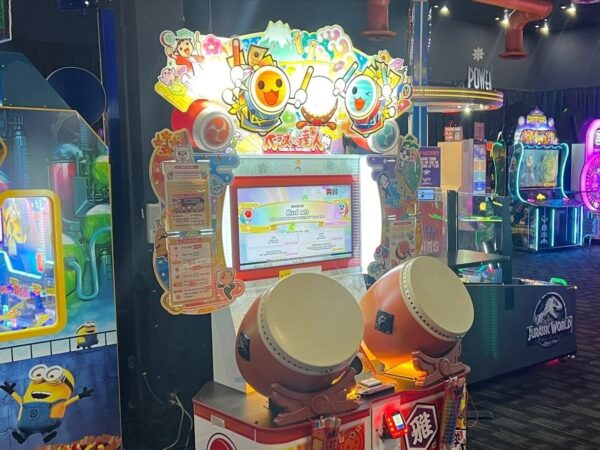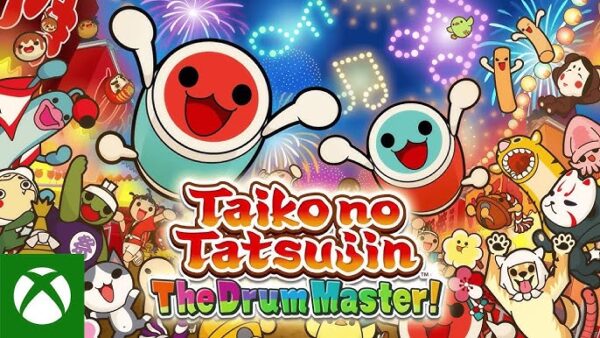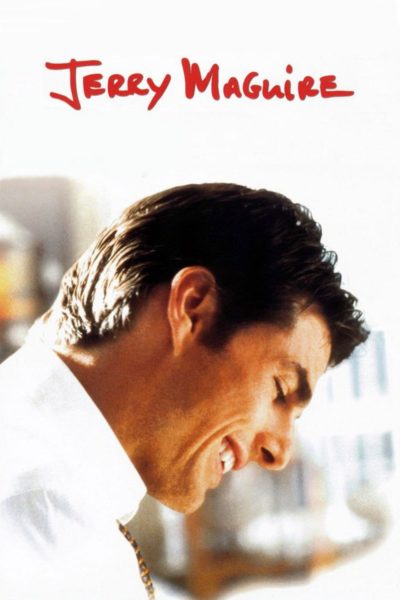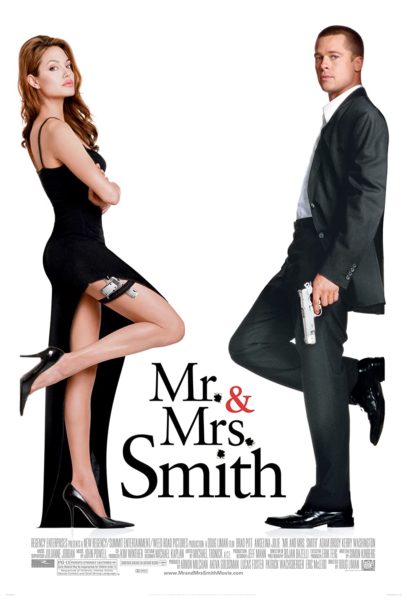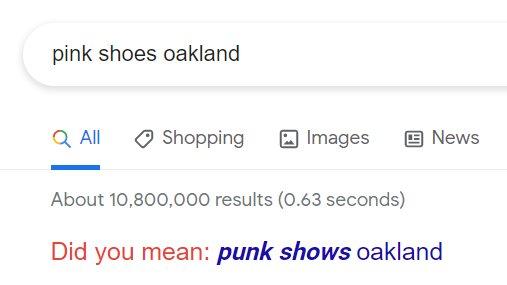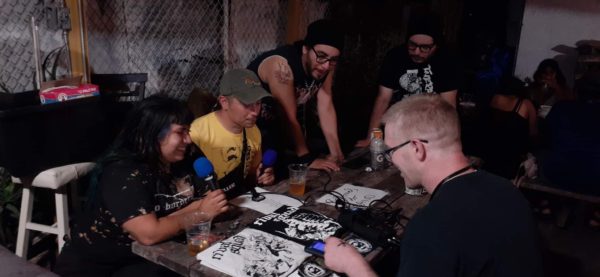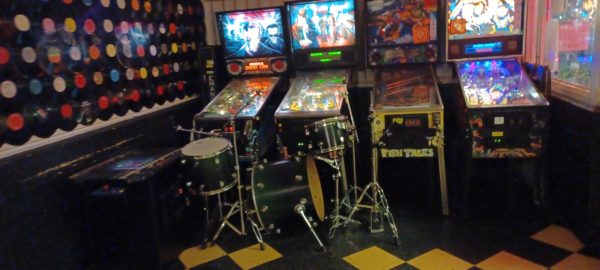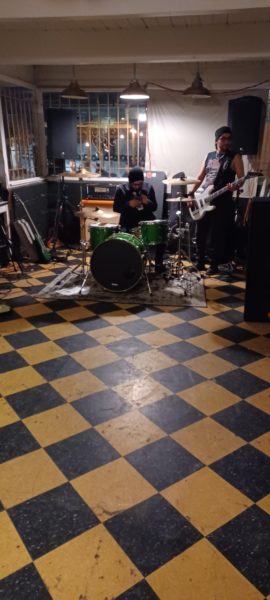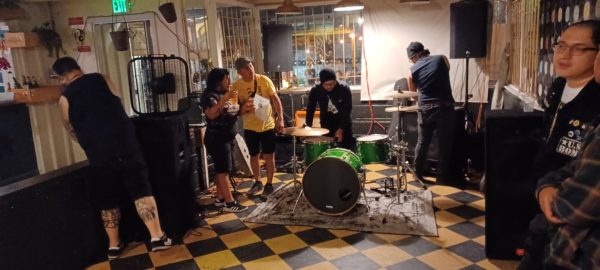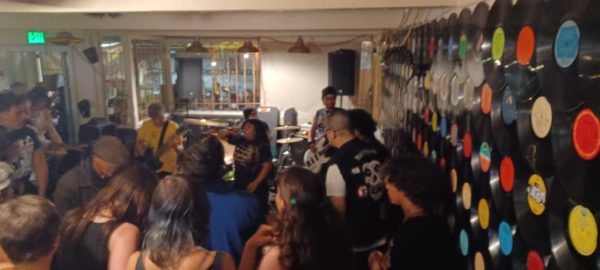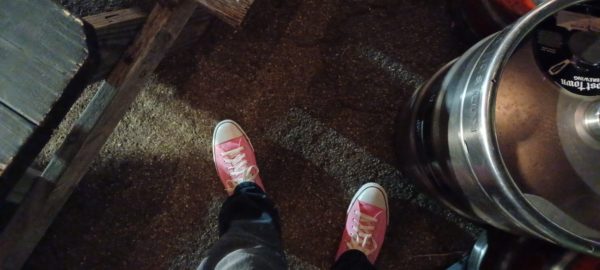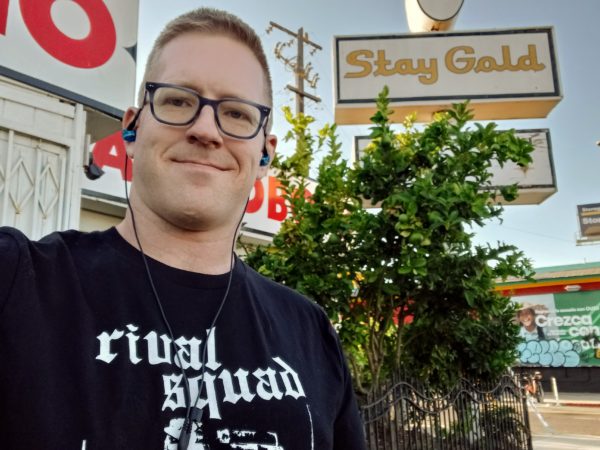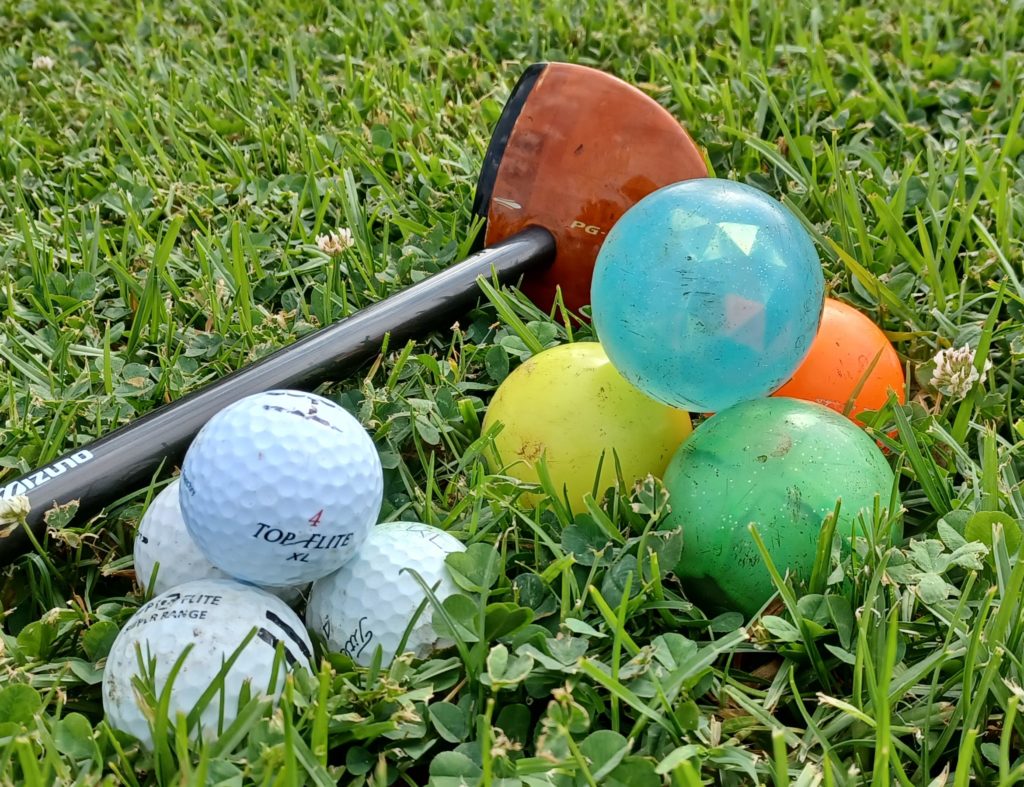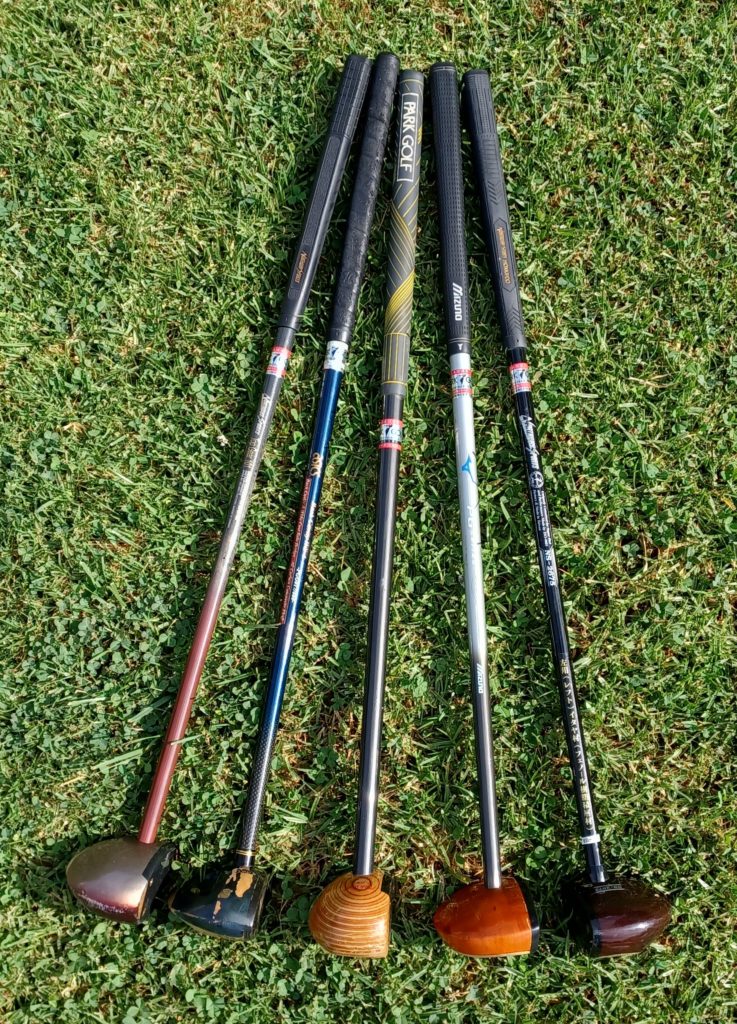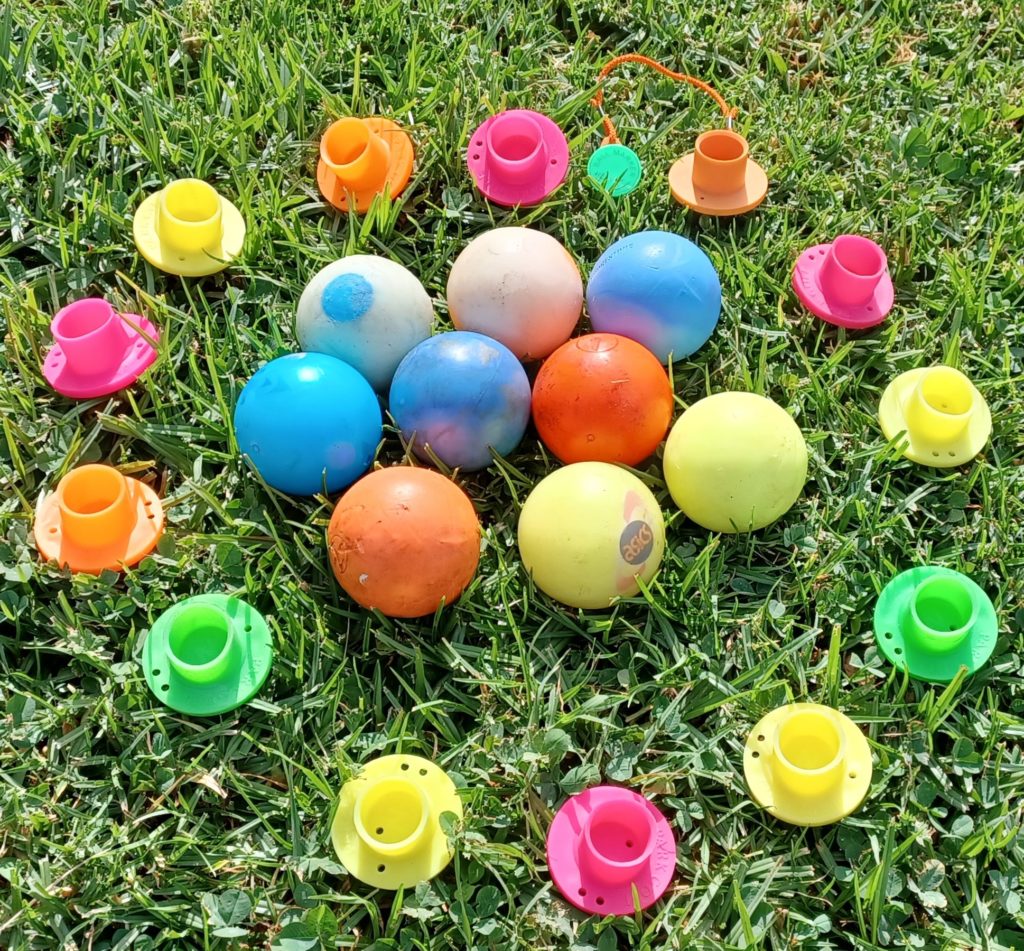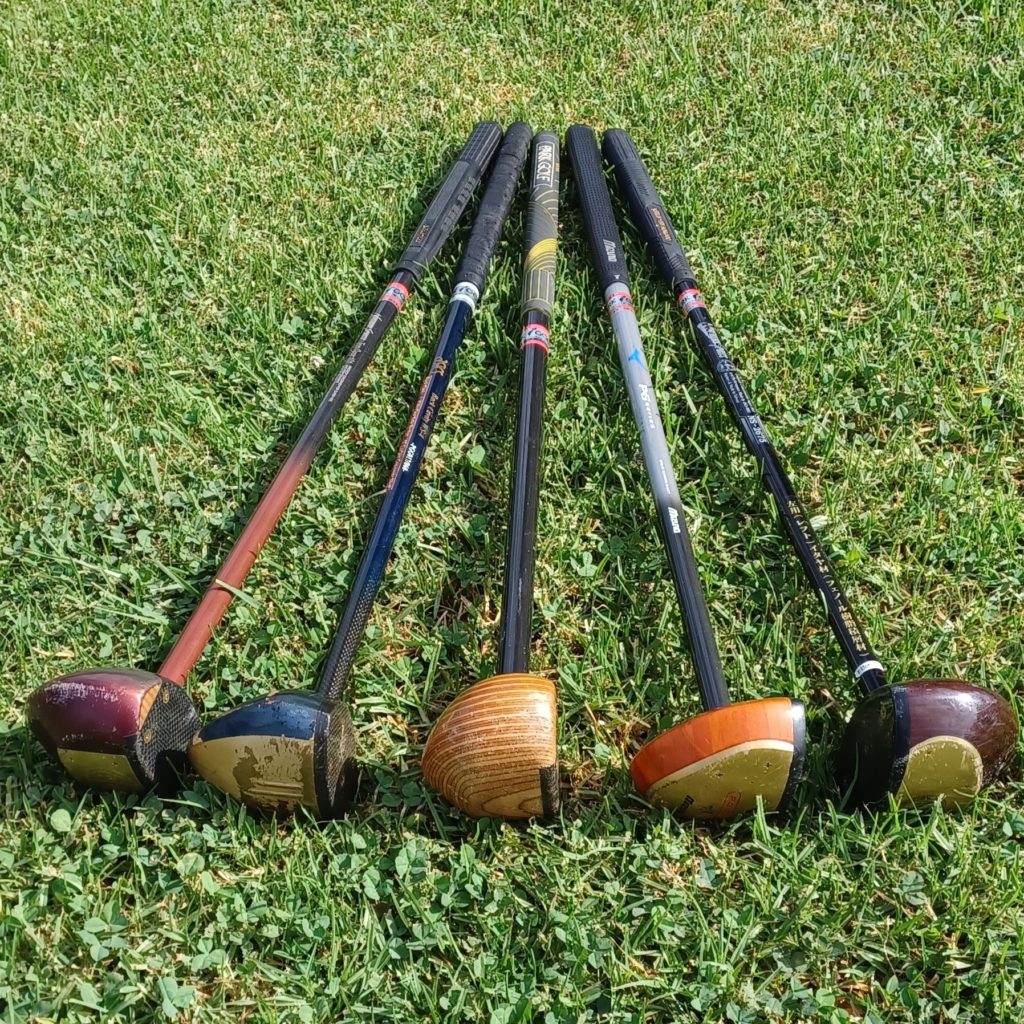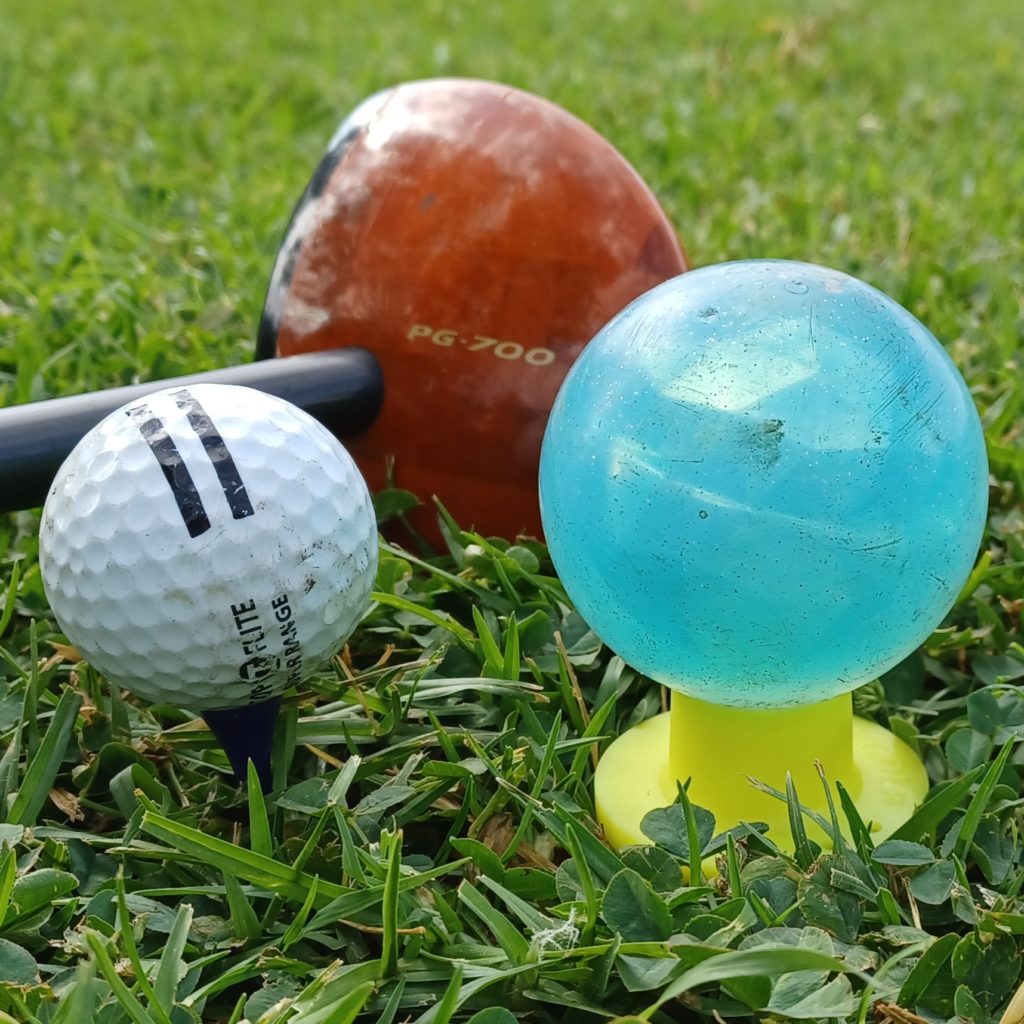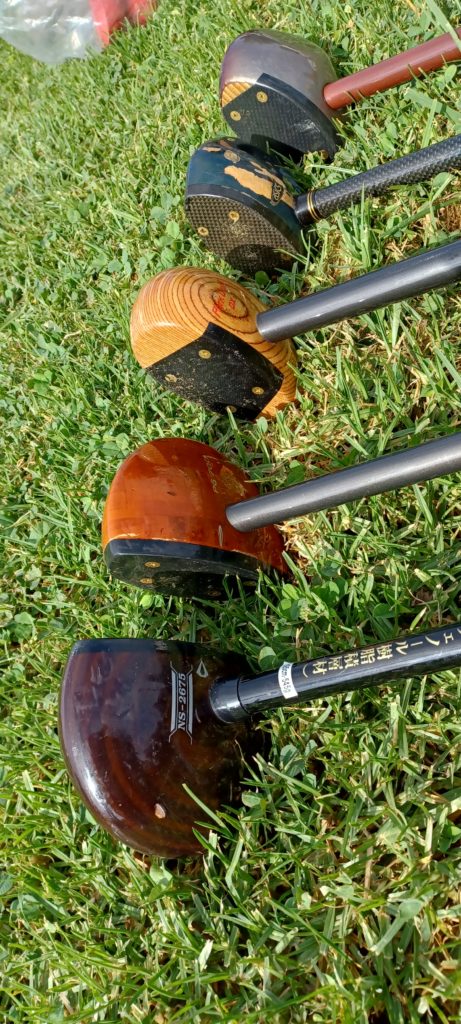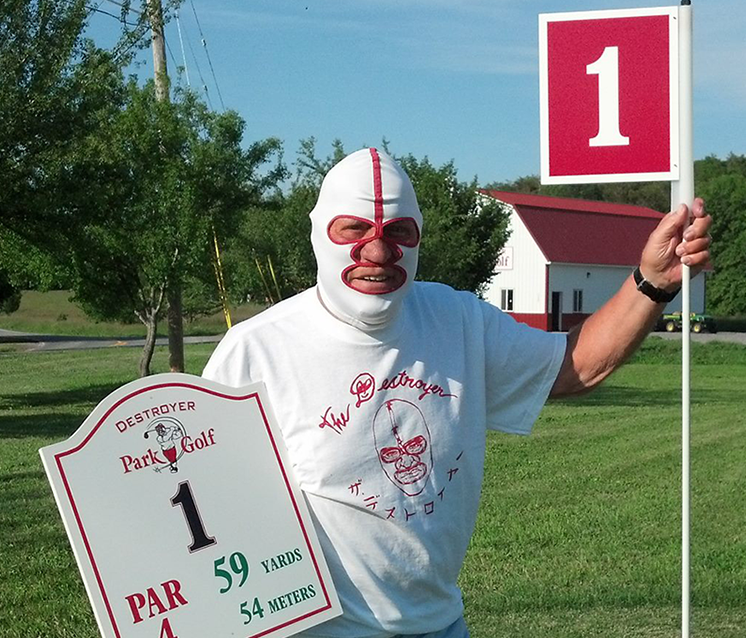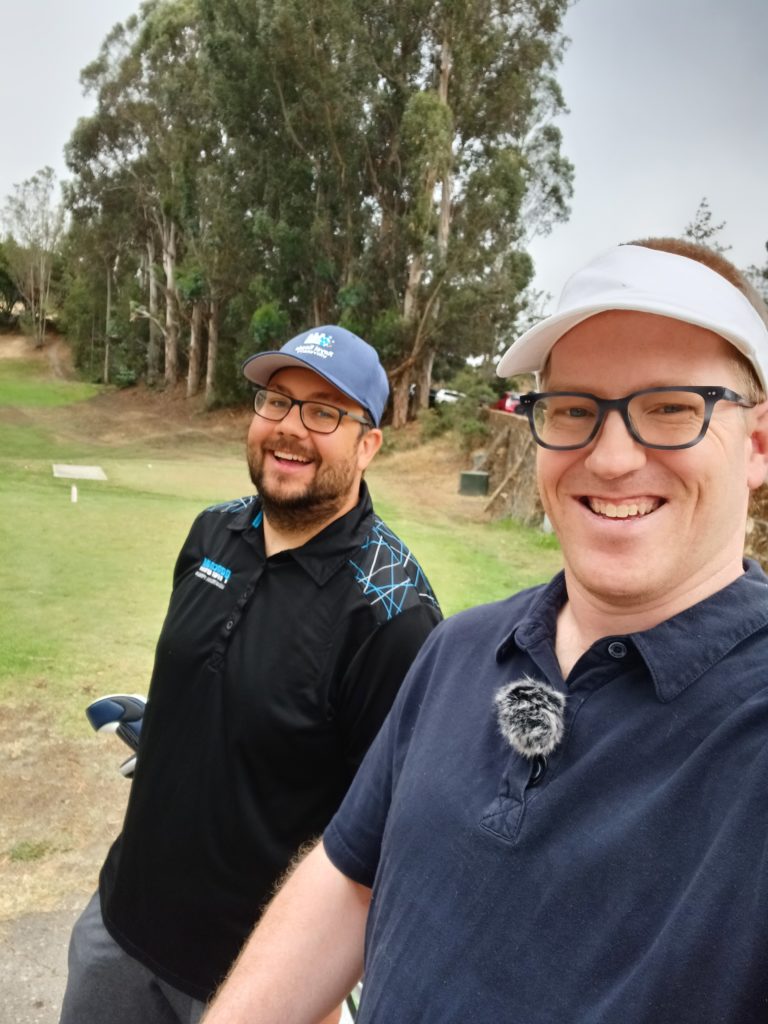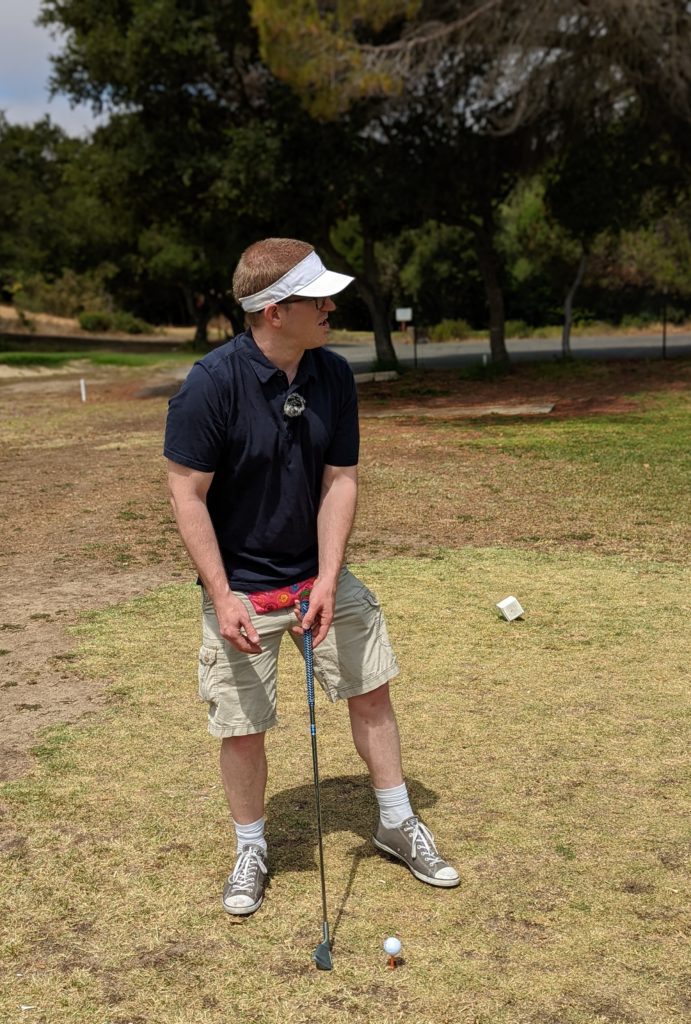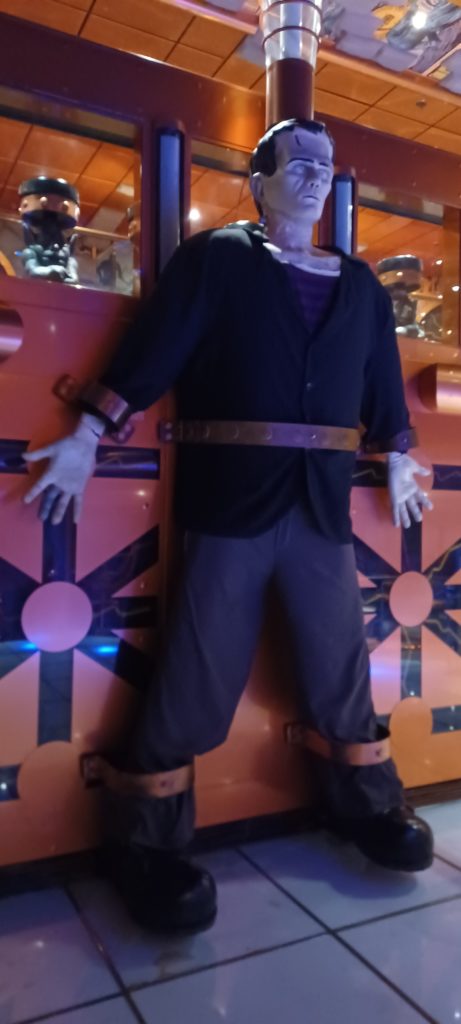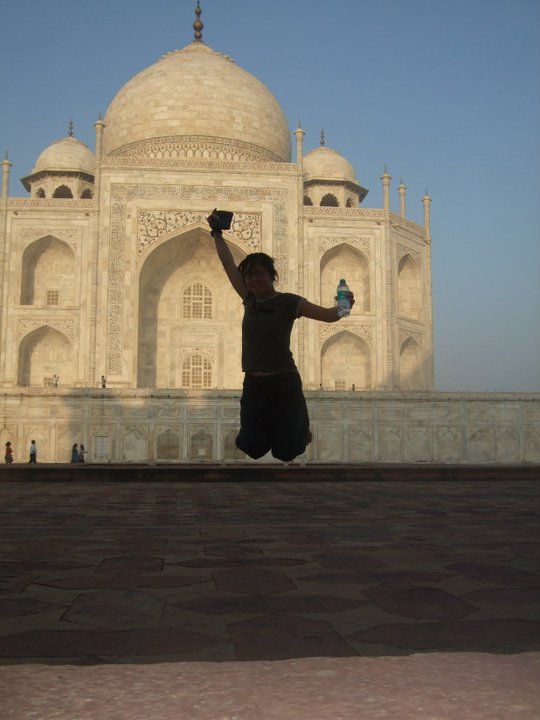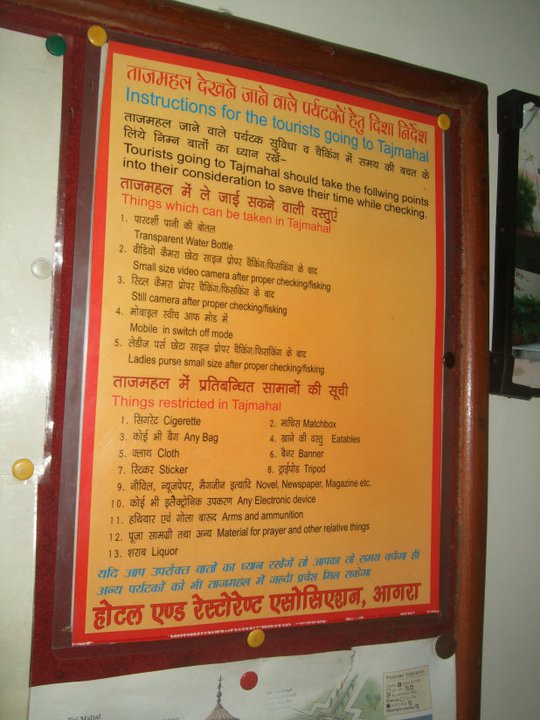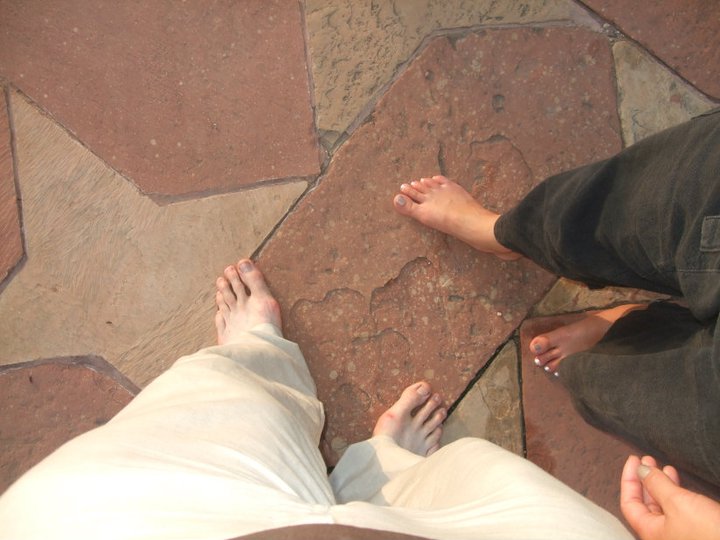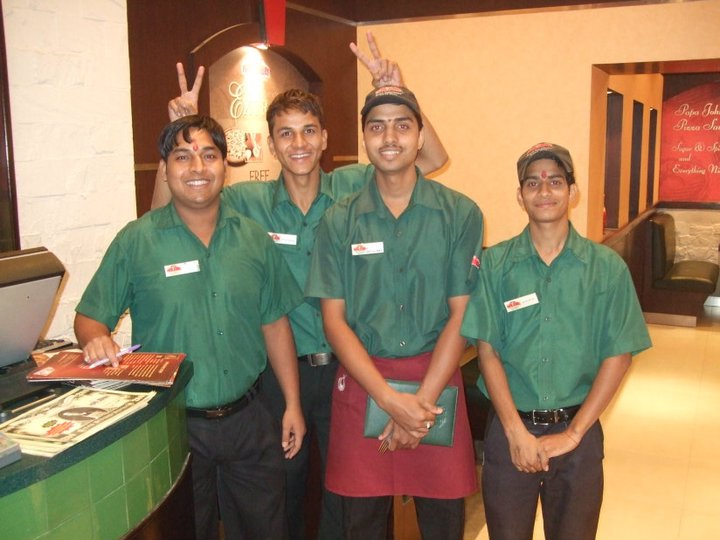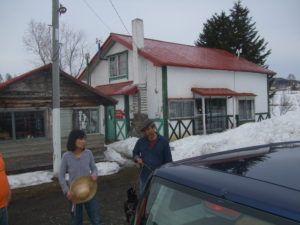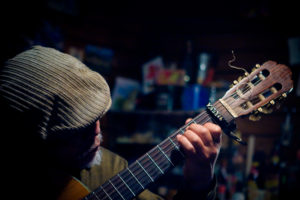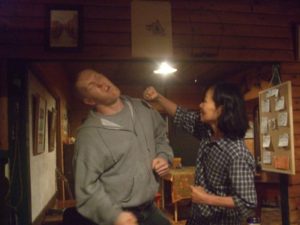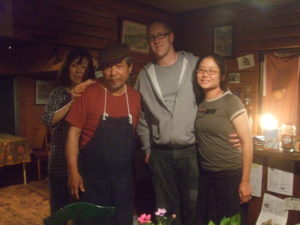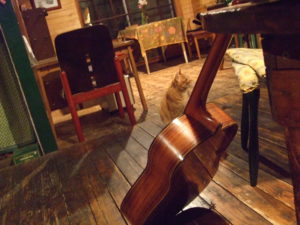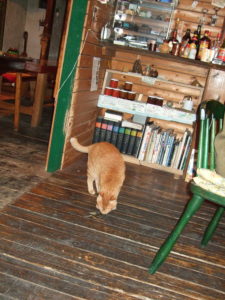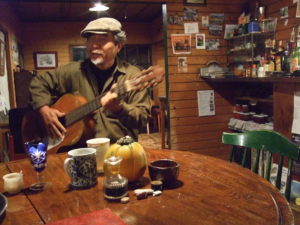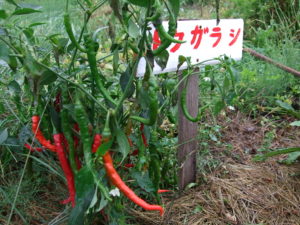This is an episode all about Superman, told through the lens of three different pieces of art. Scot picked 3 pieces that have been really special to him and others over the years, and talks about them and what makes them such good representations of the things that make Superman so special.
Scot looks at a page from All Star Superman by Grant Morrison and Frank Quitely, a page of Superman For All Seasons by Jeph Loeb and Tim Sale and a Superman sketch by Chris Samnee.
Scot talks Superman through comics, also touching on movies and tv, and celebrates what version of Superman is so special to him. Then Scot interview Liam Burke about the piece of Superman art that he owns, and Scot attempts to use his own x-ray vision to try and see what’s at the center of this nearly 90 year old character.
Liam Burke | Swinburne University:
https://experts.swinburne.edu.au/1709-liam-burke
Check out Liam Burke’s book Superheroes Beyond here:
https://www.amazon.com/Superheroes-Beyond-Cormac-McGarry/dp/1496850106
Movie Friends Superman 2025 Episode:
https://pod.link/1662559445/episode/a55f2d8a1ee96ac66cf744094e7b785e
Cover Lover Podcast:
https://pod.link/1718482750
Chris Pecoraro’s Full Superman (2025) Guitar Music:
https://youtu.be/OG5w80Fp8e0
Luca Giannotti’s Superman (1978) Guitar Music:
https://youtu.be/dKc1Q14UVlA
Music from this episode by:
Shawn Korkie – https://www.fiverr.com/shawnkorkie
Luca Giannotti – https://www.fiverr.com/lucagiannotti
Chris Pecoraro – https://www.fiverr.com/cpecoraro18
Brrrrravo – https://www.fiverr.com/brrrrravo
Bastereon – https://www.fiverr.com/bastereon
Komiku – https://freemusicarchive.org/music/Komiku
Aandy Valentine – https://www.fiverr.com/aandyvalentine
—
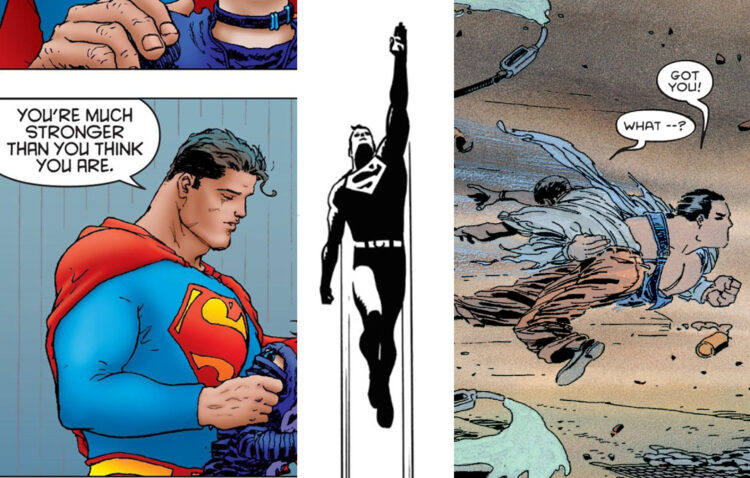
TPS020 – Superman in 3 Pieces
- Hi, and welcome to The Perfect Show. I’m your host, Scot Maupin. I’m what you might call a perfection prospector, sifting through life looking for little things or experiences that could be considered ‘perfect.’ Join me each episorde as I examine one topic that I’m presenting as a little nugget of perfection.
Hey, I want to talk about Superman.
It’s a self-serving urge because there’s a new movie and it’s in the zeitgeist and maybe I can siphon a bit of that energy my direction, sure, but there’s also this deep desire I’ve had for a long time to figure out a way to make a Superman episode for this show.
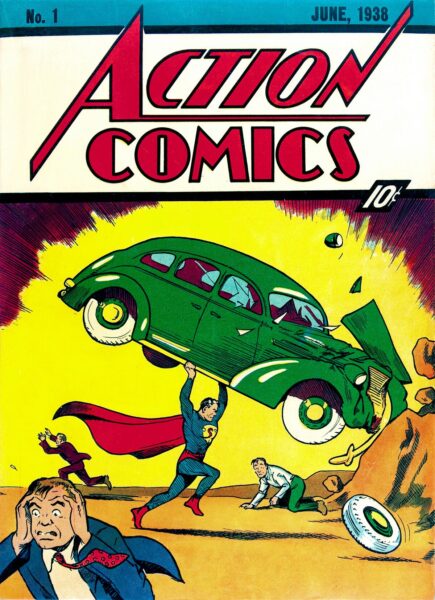
Superman was introduced in 1938’s Action Comics #1, created by Jerry Siegel and Joe Shuster. And he has been incredibly popular ever since, appearing of course in comics, but also consistently showing up in other media too. Radio, animation, tv, movies, but I don’t think I’m really the guy to give an encyclopedic history of the character.
There are definitely shows that cover that stuff well. I know because I found those podcasts, I listened to them and enjoyed them. I’m totally the target audience for them, too.
But then what am I making? Well, so there’s already a ton of stuff that covers the normal bases for the character, but I figure that just frees me up to not have to rehash that and just cover Superman in my own way.
Also, Superman is such a rich topic that there’s no way I could really cover it all, so I’m going to have to pick and choose what to include anyway…
And after a lot of brainstorming and listmaking, I was able to narrow it down to three pieces that I think would be good to focus on. Three pieces of Superman that are truly meaningful to me.
They are all on the comics side of things, which, with me being a reader of comics for so long isn’t really surprising, I’ll get some movie talk in, too — I mean of course — but these are three pieces that give me real emotions or feelings when I see them, and continue to do so even today.
So I guess this is also my warning that it’s about to get extra-comic-booky up in here as I describe them one by one, and also use this as a jumping off point to also examine what I really love about the character.

So, corny or not, Superman, the hero, the concept, is very important to me. The idea of heroes is important for me, and I locked into the superhero thing young, and I would read and reread every comic book I could get my hands on – which turned out to be a lot, actually.
I liked Superman before ever reading the comics, the way that all little kids do: from cartoons and underoos. I think as a young child, the appeal of having superpowers is that children don’t get much power usually, and Superman is the most powerful hero who can do the most stuff, so he’s the strongest magnet for that stuff.
Then I sort of lost interest — which may have lined up with a dip in the writing on the comics, but I think more likely it was that I entered an age where I started worrying more about what was ‘cool.’ Teenage years are practically consumed with trying to be cool, and Superman is like the world’s biggest boyscout, which I thought was not cool. Who was cool, you ask?
Well, I was a moody teenager so I was more into Batman – for some strange reason, — but even now I‘d still say that Superman isn‘t ‘cool,’ or rather he’s never trying to be ‘cool.’
He needs to give off a different vibe than ‘cool’ because I think a big part of being ‘cool’ is how it’s a status that distances you from others. It divides people into in-groups and an out-groups and at every point I think Superman is always working to close the distance between himself and others that he always feels as an alien. It’s okay for him to not be cool, because cool is a phase people go through, and Superman, I think, doesn’t really do phases.
I mean, yeah, I know there have been phases for the character like the long hair phase or the electric Superman phase, but I mean his virtues and ideals and other character traits.
Which is tough from a story perspective, and counter-intuitive. We want to see most characters go on Joseph Conrad’s classic Hero’s Journey – so like a story that will see them grow and change, doubt themselves and fail, maybe refuse the call or give up all hope before finding a way to triumph in the end. Tons of great Spider-man stories do that, by the way. He’s perfect for it.
And there are definitely Superman stories like that, too, but for me? I like Superman as a constant, where he doesn’t really waver or change much.
The Superman stories I like have Superman always stays true to his ideals, extremely virtuous, unbending and uncompromising, believing there’s always a way to triumph, and then you build whatever story you tell around that solid core. You sort of weave the story arcs and the other character arcs around this straight line.
It’s a different type of exercise. I don’t see that as a limitation, I see it as a rare sandbox for storytelling where you can have absolute faith and trust in your main character, and feel like he’s going to figure it out and make it all okay – you know, because he’s Superman.
Then you get to focus on interesting ways to stack the deck against this character and clever ways to save the day in the end.
I think it gives you a framework to tell stories that you can’t really tell in many other places.
So you get older. Being cool isn’t as important. You mature. And for me, specifically, when I became a parent, the appeal of Superman came back strong.
I think the appeal now is the power to protect others. The ability to keep anyone vulnerable safe and sound. Being in a position to save people in trouble. You know, Superman’s ability to give comfort, and assure people that it’s all going to be okay in the end.
When I came back around to Superman as an adult, I think it was in part that the timing was right for me to come back to Superman, but also a number of properties have come out the past few years that I enjoyed and felt all of them were sort of were on the same page as me about the ‘core tone’ of Superman.
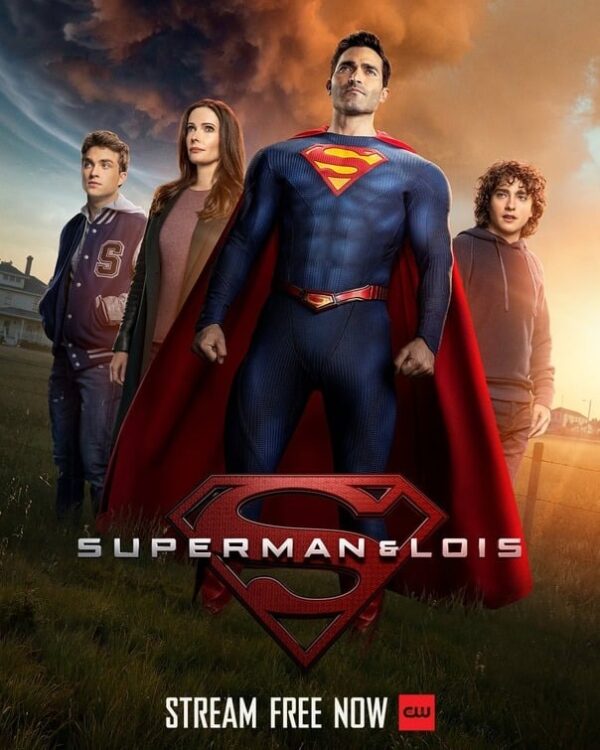
There‘s a show called Superman and Lois that ran 4 seasons, where Tyler Hoechlin played Superman and Clark Kent, who is now a dad on this show – and explored more nuanced Lois and Clark dynamics as well as parent/kid dynamics with both of them.
Sure, it’s weekly tv, so there were some plot holes and episodes varied in quality, but I felt like the tone of Superman and all the relationship stuff was always in the right direction.
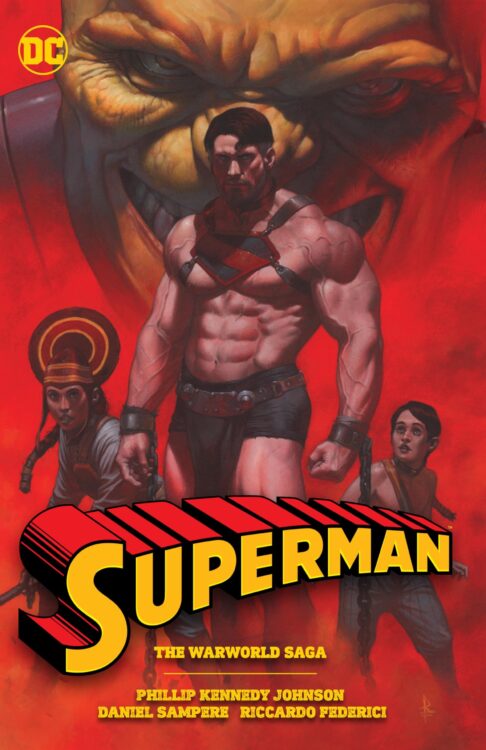
And It’s the first live action media to really have him as Superman the dad, which is where the character is in the comics, and where I am in life, so I appreciate dad-mode for Superman in a way I may not have when I was a kid.
Also I am a comic book guy in my heart of hearts, that’s where all of this begins and ends for me, and that’s also where another bit of recent Superman excitement came from. I heard great word-of-mouth about a really well-liked run of Action comics coming out, now collected and known as Superman: the Warworld Saga, written by Philip Kennedy Johnson with a lot of amazing artists.
It sets Superman on Warworld, an alien planet, with his powers weakening, and being put to the test both physically and of his values and ideals in the process. It’s like plunking Superman down into a space version of Sparticus or Gladiator. It’s just such a wonderful exploration of the character, and holds true to everything I really like about him.
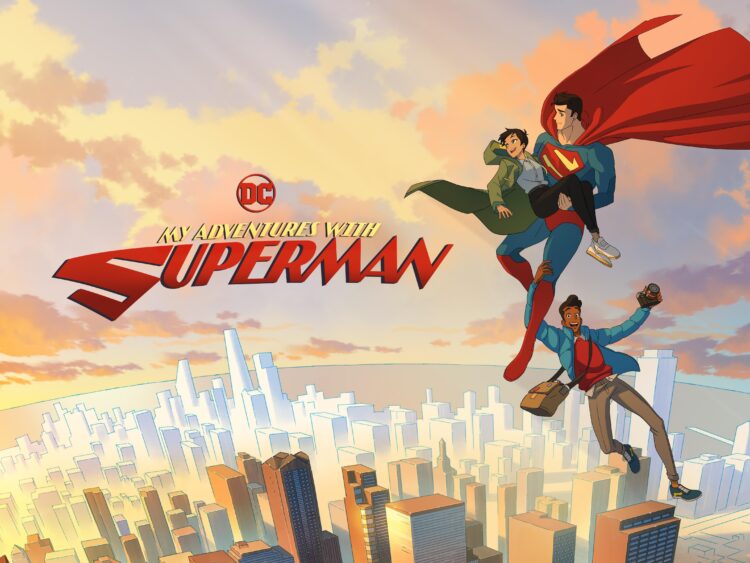
Then there was an animated show I shared with my daughter called My Adventures with Superman, more anime-style than previous versions I’ve seen, and it’s so delightful. This one is Lois and Clark both just starting out as reporters and Clark just starting out as Superman but the tone is right in this recent wheelhouse of wholesome and good and a Superman who is always troubled by not being able to do more.
And now the new Superman movie, directed by James Gunn, which just came out, and I am happy to say also easily slots into the ranks of this stuff that really hits that right tone for me.

No spoilers here from me, so if you haven’t seen it yet, you’re fine, but this new movie shows a very heart-forward version of the character. I’ve seen the term ‘hopecore’ thrown around online.
we see him constantly working to win not just the fight, but win over his opponent. To diffuse the conflict, not overwhelm it.
You don’t untie a knot by pulling on it harder. We see the Superman I love, and I love that there’s so much good Superman stuff right now.
He’s the hero all others are based on, and either refracted off of or reflected against in some way. The character is meant to be the essence of heroics, the most genuine, earnest, and pure version of good you can imagine. Not perfect, but always striving for better and believing in more.
The concept refracts not just into other superheroes, by the way, but I think it refracts into real life as well. Real world heroes exist of course, but the concept of Superman, specifically, is out there doing good on it’s own.
What I mean by that is in researching for this episode I came across several instances of people specifically crediting Superman, fictional Superman, of bringing about improvements to their life, making them be better, making them try harder, because it felt like Superman was inspiring them. In some instances people credited these things with actually saving their lives.
I found tons of stories of this – Reddit pages, BBC articles, Facebook posts, blogs — people citing the movies, the animated series, reading the comics, or an Alex Ross painted poster from Kingdom Come, – pointing to those being turning points in their actual lives.
But one specific reference popped up more often than any other, as I looked. One page actually, from one issue of one Superman comic book. I saw this single page pointed to in several places independently.
I see people post it just by itself on social media, (and If you’re a Superman fan you may already know where I’m going with this.)
PIECE 1 – ALL STAR SUPERMAN

The first piece I want to focus on for this episode comes from All Star Superman issue 10, written by Grant Morrison with art by Frank Quitely.
That’s a comic book series that came out between 2005 and 2008, but I didn’t read it then because during that whole time I was living in Japan, and had fallen out of collecting comics. This page was the first thing I had seen of it, when it would pop up in my feeds from time to time. And then it was seeing this page over and over that eventually got me to buy and read the whole series.
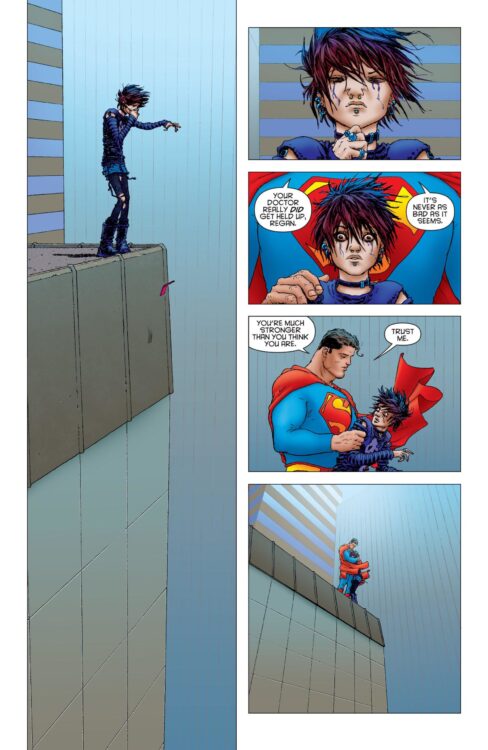
It is part of a larger story. It connects to the pages before and after, but it doesn’t need to. People respond to it like they do in part because it works so well as a perfect little one-page Superman story all on its own.
It will be posted in the notes and on the webpage for this episode, but I’ll try and describe it the best I can. I’m going to be doing this a few times so please bear with me as I attempt to translate images into audio.
The page is divided in half, vertically, and on the left side is a tall panel with a young woman standing at the edge of a tall building and dropping her phone over the side.
The right side is divided into 4 panels, stacked vertically. At the top is a close up of the young woman’s face, eyes closed, crying. Next is the same angle, but Superman is now behind her with his hand on her shoulder. Her eyes are open in surprise and Superman says ‘Your doctor really did get held up, Regan’ ‘It’s never as bad as it seems’
Next panel we see her turning to see Superman behind her: solid, gentle, reassuring. He says ‘You’re much stronger than you think you are. Trust me.’
And then in the final panel we see she has fully turned to face Superman, and collapsed into his arms as he holds her, his cape blowing around them both.
It’s beautiful. It still gets me, and I’ve seen it countless times.
It’s just so Superman.
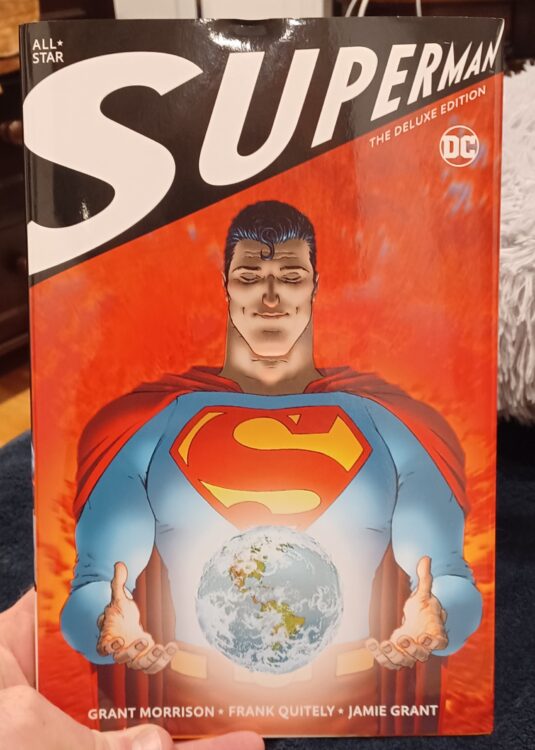
And I just find it incredible that through this, and things like this, Superman is a fictional hero, yes, but he’s still saving actual lives. A concept powerful enough to create real heroics. Honestly, what’s more Superman than that?
Out on the weirder side of Superman comics, which All Star Superman shows some great peaks into, it’s not hard to imagine an alternate world where Superman, and everything that goes along with it is real, just on a different plane of existence than us. And that the hero who is real there finds a way to help make this world better, too, reaching into it in the form of little ink drawings, sure, but still saving people however he can.
One of the things about Superman is that with the right writer, really anything feels possible. And when Grant Morrison is that writer, you get to feel that way a lot.
Grant writes a relaxed and confident superman. One who is massive, but gentle, and calm.
He’s also patient, fighting humans and other aliens the way you might defend yourself from a dozen puppies attacking your ankles. You are in no real danger, but while you untangle the situation you still are continuously looking out for all the puppies and keeping them safe. You can’t just address it by tossing dogs around left and right.
I love Grant’s Superman, but way before I saw that page, there was a different single page of a Superman comic that I could point to as my favorite.
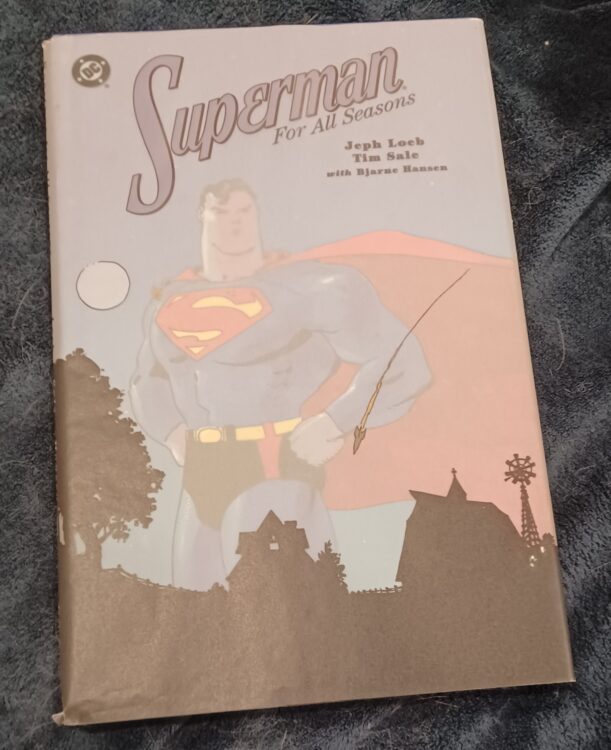
PIECE 2 – from SUPERMAN FOR ALL SEASONS
Piece number two for this episode comes from the comic Superman for all Seasons, another one that gets me emotional every time I read it, it came out in 1998, the year I graduated high school and was supposed to do this whole boy-to-man transition. To leave my home and move to a bigger place for college. I would just be going from one place in Kansas to another place in Kansas but still, Superman’s whole thing seemed extremely relevant to me at this point.
This would have been when I was still identifying more with Batman’s mood than Superman’s, but I followed the writers and artists I liked wherever they put out new books. I had loved the series Batman: The Long Halloween, by Jeph Loeb and Tim Sale, so I gladly bought their much anticipated follow-up Superman For All Seasons, even though Supes wasn’t really my guy at this point.
It was four extra-long issues, each representing a different season, each narrated by a different Superman character, and while many of us were expecting something dark and gritty like The Long Halloween to put some real edge on big blue, I was not prepared for how hard it would swing in the opposite direction.
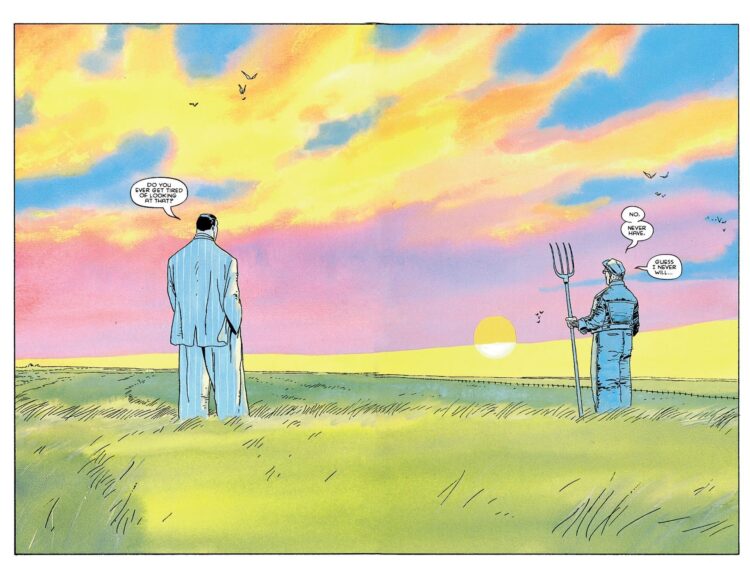
It’s so bright, colorful, beautiful, and earnest. These guys, Jeph Loeb and Tim Sale, would go on to work their magic together many times over for heroes in both Marvel and DC, but this one is my favorite.
The first issue is narrated by Pa Kent, and Clark is still just Clark. He’s getting more powerful but he’s unsure of himself in many ways. And Tim Sale draws Clark like a great big ox, but also clumsy and awkward. It’s great.

When a tornado rips through Smallville, Clark gets swept up while trying to help, and blown about in the storm.
While up above, he spots the tornado heading for a gas station, putting the life of one of his parent’s friends in danger, and for first time, now suitably motivated, Clark flies.
You turn the page and see this farm boy swoop through, grabbing the man so fast that we can only see Clark’s top half. His legs are just speed and motion. The force of the wind is ripping his shirt off as he flies through the twister. The man says, ‘What —?’ And Clark simply says ‘ Got you!’
Pa Kent narrates this sequence and says, “There are so few things a person can be really sure of. But, I believe, in the wild trouble of that moment… …our son…Became a man.”
Then the next two panels we see the tornado hit the gas station and a huge explosion as Clark shields the man from the blast.
All very exciting and dramatic stuff, but it’s the ‘Got you’ panel with the context of Pa Kent’s words. That’s the one for me. It gave me chills the first time I read it. It still gives me chills.
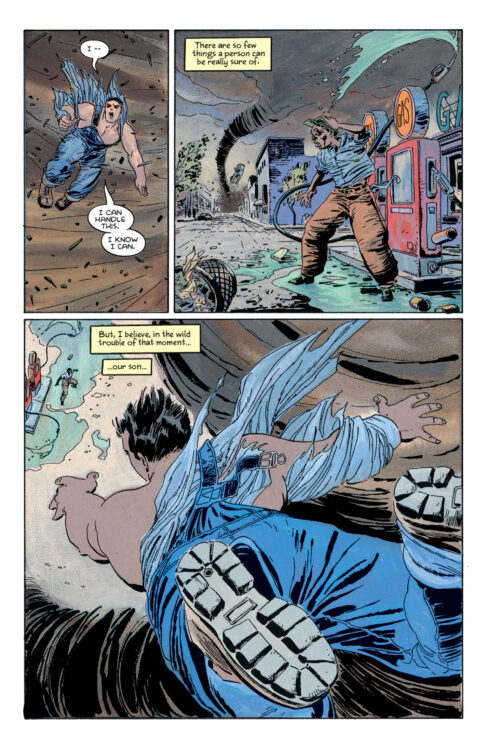
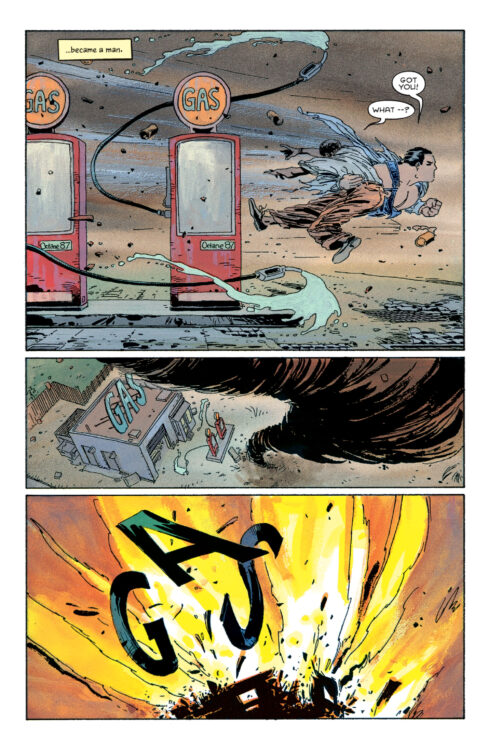
It’s inspiring. It makes me believe in heroes. It makes me want to do good and help others. It does what Superman does. It brings out the best in the people it touches.
Again – for both of these, find them and look at them with your eyes, because there’s really no way I could’ve done them full justice with just words, I feel.
But that won’t stop me from trying again, because there’s one last piece I want to talk about.
PIECE 3 – THE CHRIS SAMNEE DRAWING
It’s the newest of the three. It’s also the least widely available. It’s different from the other two in a couple of ways, for one – it’s not a page from a comic, it’s a single sketch. The second thing is that it’s black and white.
Piece three is a drawing of Superman by Chris Samnee, who is a professional comic book artist. His name is spelled Samnee, but somewhere I saw once he wrote it rhymed with ‘Omni’ so that’s why I pronounce it like I do.
For a working comic book artist one of your side-streams of income is going to conventions and doing sketch commissions for fans. They ask you to draw something and pay your rate and then walk away with a custom work of art from the artist. It’s awesome.
It‘s also 2025, so many artists have a way to take commissions and sell sketches online.
That’s where this Superman pic enters the story.
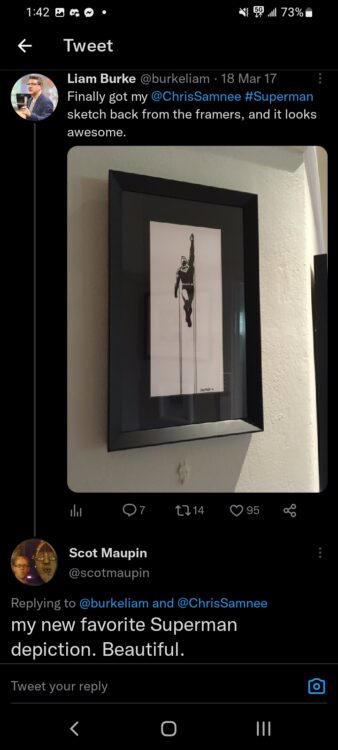
I first see it on Twitter back in March of 2017 when Chris Samnee retweets a photo sent to him from a fan who had won a piece of Chris’s art in an auction, gotten it framed, and was sharing the results back with the artist.
It was simple, but striking. I’ve seen countless images of Superman, drawn by so many different artists. This one really got me.
When I asked for a straight-on shot of the piece I was treated to a copy of the unframed image where I could really get a better look at it.
I will of course attach the pic to this in whatever way I can, like the other two pieces, but in the meantime here’s the ears version –
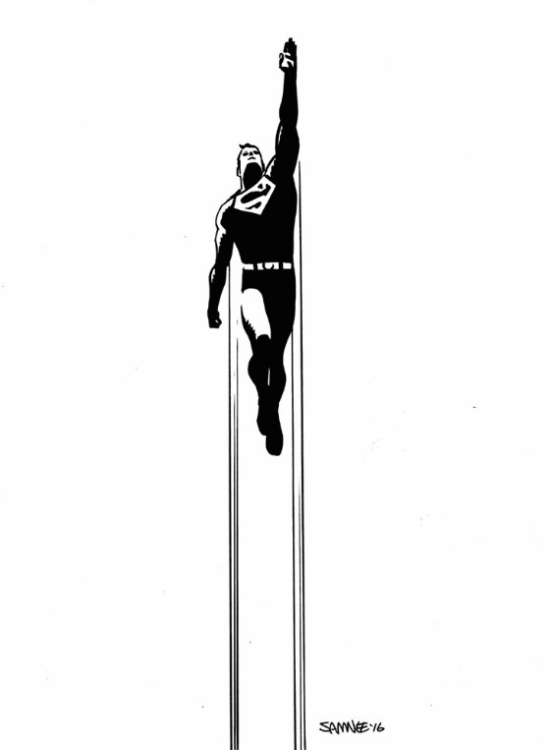
This is an ink drawing of Superman, in costume, flying skyward. It’s a full body shot where Superman is facing the viewer, one hand outstretched in front of him and one behind. The body is in silhouette except for his face and one thigh, minor highlights on the hands, shoulders and arms, and a white S symbol on his chest.
The cape is represented by a few lines on either side of Superman where the edges would be. They extend down off the bottom of the page and convey motion and speed and flight all at once. And then at the bottom is Chris’s Signature which just says ‘SAMNEE’ in all caps, and the year 2016.
That’s it. Very simple. Very graphic. The face is a few shapes. One for each eye, one for the nose, and a line for the mouth. Pretty thick lines and basic forms. The hair is just hinted at by a small shape on top of the head, and yet there he is. Superman.
I love this image, I think it instantly became my favorite image of Superman, and that means it moves to the front of a very long line, but there are just things about it for me that give it that spot.
First I love Chris’s style. I loved his runs on Capote in Kansas, Daredevil, Black Widow, Captain America, Firepower, and just tons of stuff.
It’s all the perfect level of detail for me. I’m not one for more lines being better, I’m usually the opposite. David Mazzucchelli is one of my favorite comic book artists because he would just always use the perfect amount of rendering, and this Superman sketch reminds me of Mazzucchelli’s work on Batman Year One in all the best ways.
Okay, so I dig Chris’s art, clearly, but why this particular image?
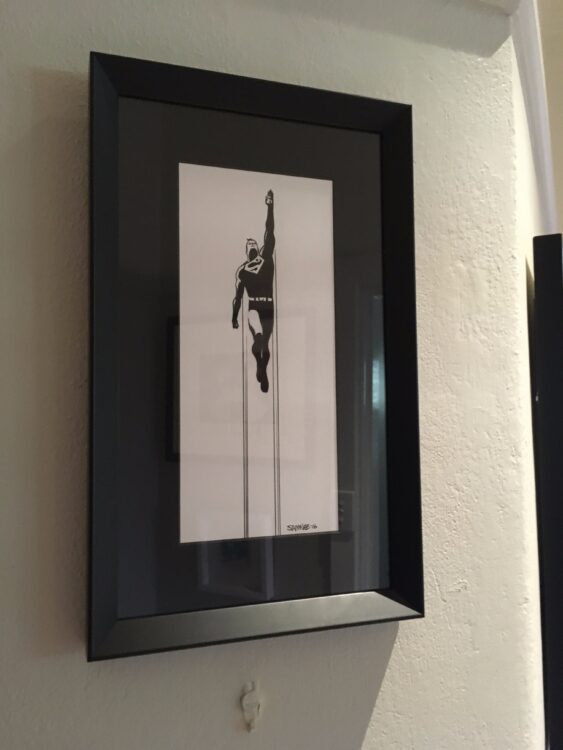
I get that art is subjective, and a lot of this is based on the strong personal reaction I had when seeing it, so it may not strike everyone the same way, but what I like so much first and foremost about this drawing is it seems so instantly iconic.
This Superman is as classic as it gets, and something to me about the lack of angles or sharp edges make the forms seem statuesque, and it even reminds me of an academy award trophy. Which, of course it does, – have I mentioned I like movies?
The other thing about this picture’s level of detail is that it gives me an idea of Superman, but lets me fill in a lot of what I want my own incarnation to be. There are eyes and a nose, but it’s vague enough that I feel like I can fit my version of Superman, whatever that may be, onto this image.
I know that there’s a specific type of Supes that I love and want to see, but I’ve also of course run into different types of Superman fans who enjoy different takes on the character and different versions of this hero. I get it. I’m not saying my version is the only Superman that should be available, and this picture sort of allows for that, I think.
If I want the stern faced world destroyer, this could be that picture, and if I wanted the smiling savior of kittens in trees, this could absolutely be an image of that guy, too. This could be Superman at any age, and really any version that we know of him. The negative space allows it to be inclusive of whatever Superman you want it to be.
And I just think it looks classy as all get out.
So I saw it on Twitter, but besides Chris Samnee, the other man involved in that exchange was the fan who bought the picture and had it framed in the first place. And that fan is named Liam Burke.
Liam is the one who replied to my initial tweet and was kind enough to send me the image without the frame around it.
And Liam was also kind enough to have a conversation with me where I could find out more about both him and this Superman drawing.
00;00;00;00 – 00;00;26;24
SCOT
Hi Liam, thanks for taking the time with me today. Could you introduce yourself for the tape?
LIAM
I am Liam Burke. I’m a university lecturer at Swinburne University of Technology in Melbourne, Australia. And my research, mainly folds around comic books, comic adaptations and superhero movies.
SCOT
And I am detecting a non Australian accent. Am I right about that? Could I ask you about that at all?
00;00;26;26 – 00;00;48;07
LIAM
Yes, absolutely. This is an Irish accent. So, Yeah, I moved to Australia, in my late 20s.
SCOT
Oh, nice. And been there the whole time?
LIAM
Yeah, I’ve been here ever since.
SCOT
Very cool.
Oh, did I mention that the picture lives in Melbourne Australia? Like, 8000 miles away from me in Oakland? Had I thought about trying to go see it in person for this? Sure, absolutely. Is the show big enough that I could fund a trip half-way across the world? Not quite yet.
SCOT
So I found you through a piece of comic book art. Are you a comic book collector? It sounds like your whole, I’m guessing from your topic of lecturing, that you might be.
00;00;48;10 – 00;01;12;20
LIAM
I mean, I’m I wouldn’t class myself as a comic book collector in the sense of I don’t actively go out to collect rare issues and have them appraised. I mean, I suppose growing up in Ireland, you couldn’t get American comic books. They just weren’t available. You could get British comic books, which were mainly war comics like Commando, or soccer comics like Roy of the Rovers.
00;01;12;20 – 00;01;33;05
LIAM
But it was very rare that American comic would be available, but usually was someone who went on holidays to Florida and came back. And this is a very precious thing. So it wasn’t really till my late teens and a couple of bookstores opened in Ireland. I mean, there were very few and usually only stayed open for a year or two before closing.
00;01;33;08 – 00;01;58;14
LIAM
And so it was very hard to get comic books. And so while I kind of collected them, I collected them for the stories, not necessarily with the intention of having a complete run or, you know, getting them appraised and, and mint condition and things like that. But I used to teach comic studies to the students. And, you know, we had the first lecture was this Oprah Winfrey style.
00;01;58;21 – 00;02;24;25
LIAM
Everybody wins a comic. So because most students, most 18 to 22 year olds don’t own a physical comic, a lot of them obviously, will read comics online and on social media. But the idea of actually owning a book is kind of, you know, is almost at odds with the way we consume content today. So I just started giving away my comics to the students so that they could all own at least one comic that they could hold in their hands.
00;02;24;25 – 00;02;43;26
LIAM
And that meant we had something we could talk about when we would talk about things like, you know, layouts and integration of text and all the other things.
SCOT
Well, maybe that’s a good jumping off point because, I am calling to talk about. Right. Talking with you to mainly discuss a Superman illustration by Chris Samnee that you own.
00;02;43;28 – 00;03;09;27
SCOT
So is this a picture that you commissioned or was it already made when you came across it?
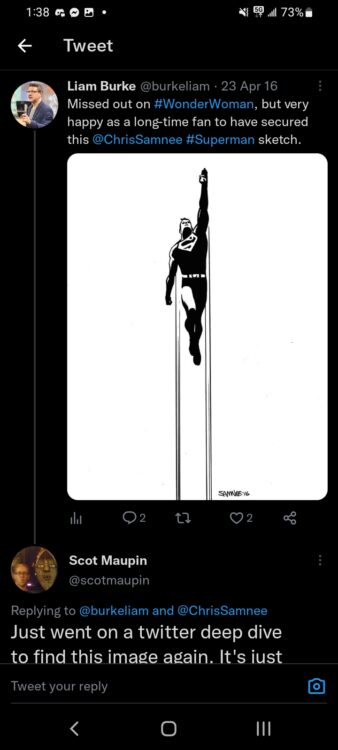
LIAM
Yeah. So I followed Chris Samnee as an artist. I enjoyed on his Daredevil run, which I felt was under sort of appreciated in its time, and he would occasionally put up commissions on his socials that he put up as he was a Batman or Wonder Woman at a Superman.
00;03;10;00 – 00;03;30;23
LIAM
And, you know, you had the opportunity to bid on them. One of the problems with being in Australia is you can’t technically bid on stuff like this from Australia, so I had to, like get it sent to a friend in the States. But, I actually bid on the Wonder Woman piece of art initially, which was this kind of quite dynamic piece where one of them was deflected bullets with her bracelets and someone else got that.
00;03;30;24 – 00;03;47;19
LIAM
And so, you know, I went, oh, I suppose I bid on the Superman one, and I got the Superman piece. And then I think it was, you know, it was meant to be because on reflection, it’s a much cleaner piece. So just to describe it because we are an audio medium. So this is a black and white piece.
00;03;47;20 – 00;04;10;25
LIAM
It’s done on printer paper, it’s A4 and it’s Superman kind of reaching for the heavens. He’s flying. And the his cape, is really just kind of suggested through these long motion lines which give, you know, the, the sense of motion and speed, but also that, you know, he has this kind of blurred effect. So it’s quite, you know, it’s quite simple.
00;04;10;25 – 00;04;36;06
LIAM
It’s a little retro, which would be typical of Samnee in terms of like the depiction of Superman. He’s not overly detailed, some overly muscular or anything like that. But it is, you know, in this very simplistic black and white sort of image, it is probably the purest distillation of what a lot of us like about Superman. The the optimism of the, the, you know, the you’ll believe a man can fly.
00;04;36;08 – 00;05;00;14
LIAM
And it’s, I think, noteworthy when you see the promotional materials for the James Gunn movie that that’s the image they’ve gone with. They’ve gone with the tagline look up. At most, the poster art seems to be, you know, David Corn sweet reaching up. And he’s sort of, you know, obviously those out, but these kind of expressionistic motion lines apparently could be the of a party can be the speed and the, and the scale
SCOT
I agree.
00;05;00;14 – 00;05;24;03
SCOT
Yeah. And just looking at him pulled it up now and looking at it, it’s I think it is what respond. What I responded to so much is the simplicity. But the just the classic nature of it, it almost gives me sort of a at first glance, it sort of gives me an Oscar statue, like an Academy Award sort of feel, where it’s just this figure standing up it to me, it looks like he’s almost swimming through the sky in a way.
00;05;24;05 – 00;05;53;17
SCOT
And then the Cape lines that are just motion. I’m always impressed at how the artist solves the problem of how do I convey motion in a static image. And so I think this is a beautiful solution for that.
LIAM
Yeah. I think you’re the description of swimming is a good one because some of the best Superman are, to my mind, is one where he’s not super strong in the sense of we, you know, in the 90s there was this move towards conveying strength through muscularity, and everyone looked like a bodybuilder.
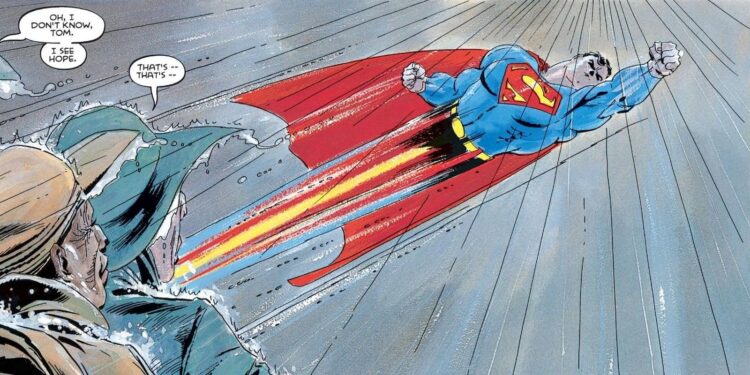
LIAM
And what are we like about, you know, see Frank Quitely’s work on All Star Superman. And the cover image is Superman sitting on a cloud. So you understand that he’s, you know, in this incredibly powerful, you know, near omnipotent being. But he there’s an ease and a comfort with that power. And he doesn’t always need to express that power.
00;06;12;21 – 00;06;44;04
LIAM
And here again, it’s not like Superman is reaching to, you know, punch through the sky, but it’s this sort of absolute mastery of environment and ability, but also ease. And that’s something that perhaps, maybe, you know, some of the detractors of the Man of Steel, Snyder, 90s comics of Superman don’t necessarily warm to, which is this idea that in order for us to understand Superman is strong, he must be punching the snot out of every single thing imaginable.
00;06;44;07 – 00;07;12;28
SCOT
Right? The forefront aspect of him is that he’s the strongest and most powerful. Therefore that’s what we lead with. But I think that’s not the Superman that I like to, to lead with. Interesting that you said that about Grant Morrison in in researching for this, I came across an interview with him where he was saying that the whole all star Superman, that image of the relaxed Superman kind of unlocked for him when he went to a convention at San Diego convention and ran into a cosplayer in Superman gear, just kind of being very relaxed and chill, and he was like, oh, right.
00;07;12;28 – 00;07;44;16
SCOT
That would be if nothing could injure you or hurt you, you’d be open and chill and relaxed in that sort of way. You know? No anxiety.
LIAM
Yeah, absolutely. I think that’s sort of the version of Superman that, I’m kind of more enthusiastic about, which, you know, Christopher Reeve certainly had that. You know, the wonderful thing about was Donner’s Superman in 78 is when Superman comes to the city, we get a montage of, yes, he saves the helicopter, but also he gets a kind of the tree, and he does all these kind of, you know, these different activities.
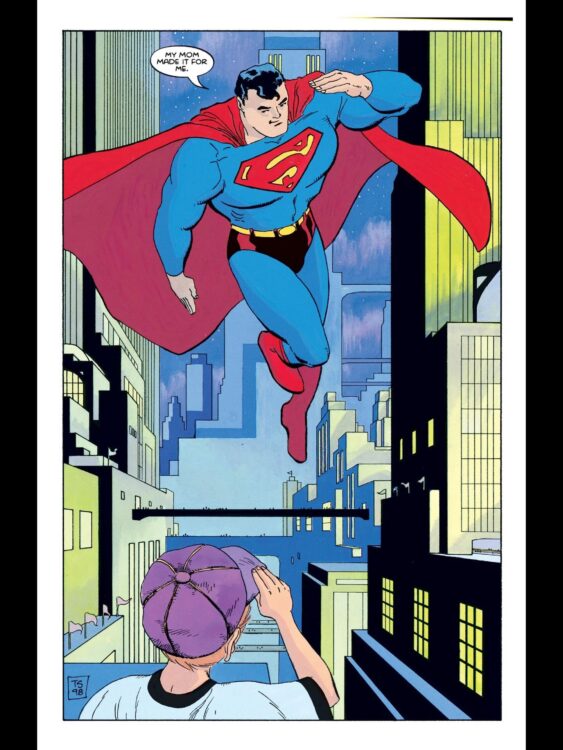
00;07;44;16 – 00;08;03;22
LIAM
And, you know, it’s really about expressing strength. It’s more about just the this, you know, this absolute kind of power. And I would say the other thing that was nice about the piece when I got it was it’s a testament to the to good framing because I got it as an, an A4 piece that I sent to be framed.
00;08;03;24 – 00;08;20;08
LIAM
And they said, oh, do you mind if we put a border within the border to make it more of a vertical aspect ratio, which is something I hadn’t considered? You know, if I was framing myself, I just would have found something that fit A4 and stuck it in there. And what it did was it took the edges off and it made it much more vertical.
00;08;20;11 – 00;08;37;22
LIAM
And, you know, it narrowed that kind of aspect ratio. And we’re thinking of these characters in, in this sort of mythic sense. And you know, you mentioned like, you know, an Oscar statuette and that’s what they are. There are these kind of these pop culture icons. It gives it that sort of it’s not just a cinematic aspect ratio.
00;08;37;22 – 00;08;59;02
LIAM
It is more, you know, it’s more Imax in that sense. It’s more comic book in that sense, in that it’s a vertical aspect ratio, which makes sense with these modern mythological icons that always kind of look up and live in the city. And it’s a vertical. It’s a vertical, you know, thrust of the image. Yeah. So the framing reinforces the, everything about the image.
00;08;59;02 – 00;09;16;01
LIAM
And so, when it came back, I think that it was at that point they went, I’m glad I didn’t get the Wonder Woman piece. This was the right one.
SCOT
So you said a little bit it’s on A4 paper, printer paper. Do you see pencil lines or. I’m not able to see the physical piece. So I’m just curious what you can see from it. ADD PART HERE BACK IN ABOUT PEN AND INK OR BRUSH?
00;09;16;02 – 00;09;34;24
LIAM
Well, yes, I can tell that there were pencil lines at one point and then it was, you know, went over with different pens. And if you look at any of the videos, Samnee uses pencil lines to do any more. Yeah. It tended to be a pencil line first, then in shadows like in inktober or in Batober.
00;09;34;29 – 00;10;04;03
LIAM
A lot of artists used to do this thing where they would do a quick doodles style image, every day of October. And he started doing Batman once, and then he would also, sell those. So I, I do manage to pick up one of those, which is kind of a nice moody piece. Gordon on the rooftop next to the bat signal and off in the distance is kind of Batman having jumped off the rooftop, presumably off to, you know, foil the Joker or the Riddler or whatever.

00;10;04;05 – 00;10;25;07
LIAM
And that’s quite a nice piece as well.
So a little bit more about what Liam said there, for those not familiar is that there’s a social trend every October where artists, or anyone who wants to participate, work off the same list of 31 prompts, one word for each day of the month, and on each day you do a different piece in ink, in whatever way you want to use ink, and share them as you go. It started out being called Inktober, but branched off in different directions and niches.
Chris started doing one he called Batober, and all his pics were of Batman, Batman villains, or Batman supporting characters. You can tell that Chris loves Batman, and his style is also a perfect match for the dark alleys in Gotham City.
And I feel like him killing it on these sketches each October is no small part of why right now Chris is working on the book Batman and Robin: Year One, collaborating again with writer Mark Waid, who he also worked with on Daredevil, Black Widow, and Captain America. That book looks like it’s gonna be awesome.
SCOT
Speaking of which, I found your picture because I was following Chris Samnee and he retweeted it, which was such a fortunate thing that I because I’d been following him for bat tober and I see this picture, and for me, it stopped me in my tracks. I was just like that image and I saw the framed one, so I saw the
LIAM
narrower ratio.
00;10;25;11 – 00;10;43;02
SCOT
Yeah, I saw the different framing and it was really impactful. And I was like, I think that’s I looked at it, I thought, I think, I think that’s my favorite image of Superman I’ve ever seen. And it’s because of how classic it is, how simple it is, but how and I’ll go into this in my episode just how much it impacted me.
00;10;43;02 – 00;11;03;16
SCOT
I was like, this is a great Superman that I feel like there are so many different Superman’s. Everyone has their own versions, and I feel like this is specific enough that we know who it is, but generic enough that we can map our own version of Superman onto the image, which is what I think I love or I’m responding to about it like it’s it’s big enough to be everyone’s Superman.
00;11;03;19 – 00;11;32;21
LIAM
I mean, it has the chest emblem, so, you know, it’s Superman, but I think if that was in shadow, you’d still know it. Superman. There’s just something a bit timeless about Superman. I mean, there’s perhaps a criticism of Superman that he’s boring. And that’s why the movies haven’t been as popular as Batman or Spider-Man movies. And, like, I don’t subscribe to that thinking, but Superman in 38, when he appears in Action Comics one, sets the template for contemporary superheroes.
00;11;32;23 – 00;12;01;25
LIAM
So every superhero subsequent to Superman is a variation on that type. So, you know, Batman comes a couple of months later. He’s, you know, the superhero without superpowers who goes out at night, Wonder Woman. When will emote Marston introduce Wonder Woman. It was explicitly to tackle the blood curdling masculinity of comics as he saw thought, Shazam was, you know, there’s court cases to demonstrate this a rip off of Superman, but the dual identity is a child devil.
00;12;01;25 – 00;12;36;29
LIAM
They’re all variations on Superman. So Superman is the you know, he’s the origin. He’s the Rosetta Stone of understanding superheroes. And so if you can’t make that interesting, I think that’s a failure of imagination rather than any shortcomings in the character. And I, you know, I think him examples like, you know, a Superman for all seasons, All-Star Superman, whatever happened to the Man of Tomorrow from comic books in which Superman is still idealistic but not naive, he is still good without being, living in a world of black and white.
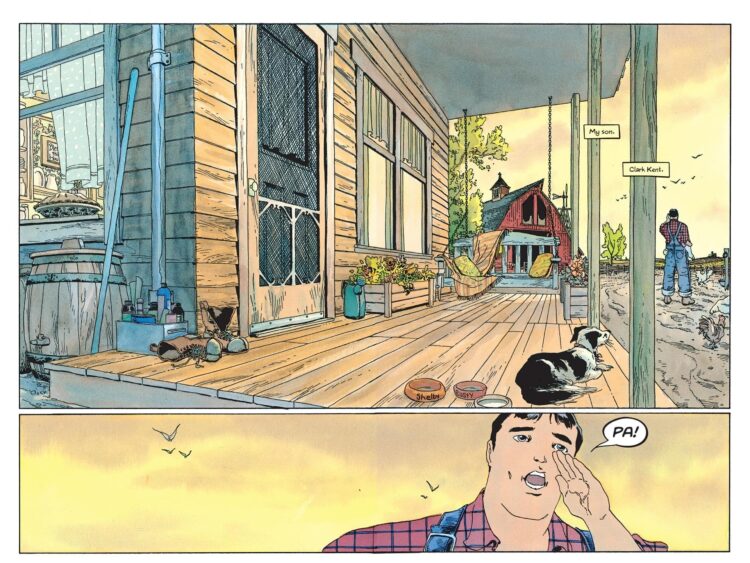
00;12;37;01 – 00;12;56;12
LIAM
And you don’t necessarily need to sacrifice, the tenets of what made the character popular on page and screen for the better part of a century.
SCOT
I fully agree, and I don’t know if it was on purpose, but you’ve mentioned three of the four titles that have gotten me very excited about this new Superman movie. James Gunn has said, I’m basing this off of sort of the vibe of these four comics.
00;12;56;12 – 00;13;12;08
SCOT
Those are three. And then I think the fourth one was Kingdom Come.
LIAM
Yeah, I think so.
SCOT
Yeah, those are beautiful for me. I’m like, that is the right compass direction. I’m very excited about this movie and seeing how it goes. I hope I have good hopes for it.
LIAM
One of the central appeals of the superhero is the transformation.
00;13;12;13 – 00;13;56;07
LIAM
I mean, if you compare a Superman to Katniss Everdeen or Luke Skywalker or James Bond, there, Luke Skywalker in the morning and Luke Skywalker when they go to bed at night. The thing that sets superheroes apart from other heroes on screen and elsewhere is this transformation from a mild mannered civilian identity to something heroic. And, you know, the argument goes, I think it holds water that that allows readers, cinema audiences to sort of aspire to perhaps the heroic type of bore, better identify with this civilian alter ego, Diana Prince, Peter Parker, Clark Kent.
00;13;56;09 – 00;14;34;19
LIAM
I think that works quite well. And Superman is, you know, as the first of the classical superheroes really established that template. And Siegel and Schuster, like most combo creators of that era, were young, dark, poor European immigrants. And they would have felt that outsider status and that sort of imbued that character. And I think that’s one of the things that makes Superman work, because here we have this character who is godlike in every sense of the word, and what makes them heroic is their desire to not float above us to but to be one of us.
00;14;34;21 – 00;14;57;01
LIAM
And so I think that’s what makes Superman transcendent, a timeless and heroic is the fact that, you know, he’s he’s his town is in the mud with the rest of us, even though he could potentially float above.
SCOT
I know you’re an author. Is there anything that you’d like to plug or is there any anything?
LIAM
I mean, I don’t have any, really.
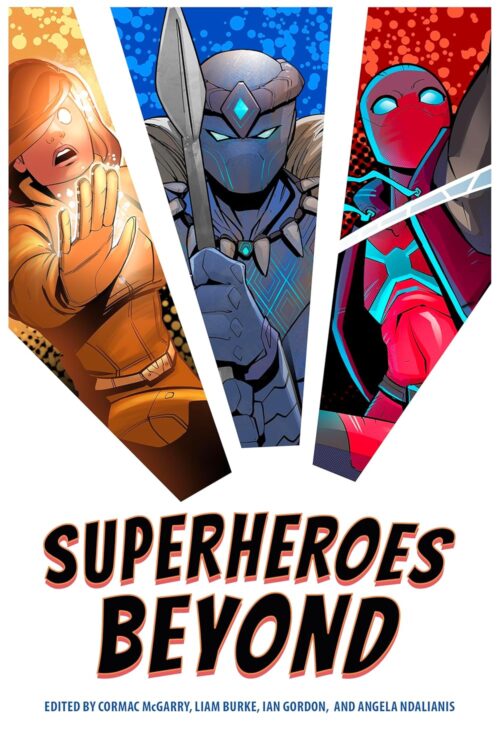
00;14;57;01 – 00;15;16;02
LIAM
I don’t have any new books. And let me think, what can I plug? Oh, we actually have a new ish book. Yeah. So last year with some colleagues, we published a book called Superheroes Beyond, which collects essays from lots of academics talk, think about superheroes, but the idea of them being beyond what we expect. So that’s beyond the United States.
00;15;16;02 – 00;15;38;12
LIAM
It’s beyond, you know, straight white men, and it’s beyond comic book page. And so this book looks at everything from, you know, Colombian superheroes to superheroes in novels and things like that. So that’s from the University Press of Mississippi. So anyone who’s interested in thinking about superheroes will think about superheroes beyond the sort of the traditional or the conventional.
00;15;38;18 – 00;15;57;18
LIAM
That book might be of interest.
SCOT
Excellent. And I love the naming convention of superheroes beyond. I am very familiar with Batman Beyond. I is when I introduced my daughter to first when we were going into the superheroes. So much so that when we got to the original Batman animated series, she now calls that Batman before. So Batman Beyond and Batman before.
00;15;57;23 – 00;16;16;20
LIAM
I love that,
SCOT
but yeah, superheroes beyond.
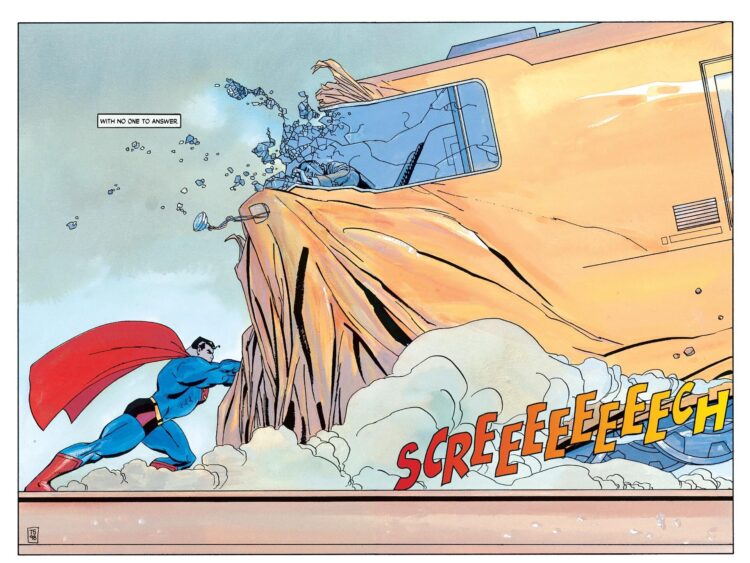
SCOT
Would you like people to be able to get in touch with you, or where can people find you?
LIAM
I mean, all my details are kind of online, so you can look me up at Swinburne University so you can see my profile there. And that kind of links you to stuff, you know, projects are involved with.
00;16;16;23 – 00;16;36;11
LIAM
And then also you can email me via the website.
SCOT
So Liam, thank you for joining me on the show. Thanks for, making time to talk with me today.
LIAM
No problem. Thank you for having me. It was, good to talk about it. It’s a piece I’ve had for, oh, nearly eight years or more, probably. And it’s, you know, it sits on my wall.
00;16;36;13 – 00;16;58;27
LIAM
In fact, I’m looking at it right now and it’s, you know, I don’t a few other pieces, animation sales and things like that, but it’s probably pride of place.
SCOT
I am very happy that you got that picture because it’s beautiful. I think I first saw it in 2017, so I’ve been a fan since then and this has been a long standing thing that I, you know, I’ve been trying to make the conversation happen.
00;16;58;27 – 00;17;07;25
SCOT
I’m so happy it finally did. So thank you for letting me do this with you today.
LIAM
No problem. And I hope you enjoy Superman. I hope we both enjoy Superman when we get to see you in a couple of weeks.

Okay, and I said earlier how I’ve seen the movie, but I didn’t say the part that I’ve actually seen it now four times so far. I just really love taking these periodic 2 hour breaks from the real world and putting myself in that heroic, positive, kind space.
Between viewings 2 and 3 I got to be a guest on the podcast Movie Friends to talk about Superman 2025 so you can find my in-depth thoughts there because host Seth and I talked about the various things in the movie for over an hour. – couple of things about that pod – it’s not spoiler free, so listen after you’ve seen the movie, and also I did not know how heavily I was breathing into the mic at the time, so sorry about that extra nose noise, but I’ll include a link in the show notes, and here’s a snippet from Movie Friends that I think fits in well with what we’ve been discussing here:
CLIP – ITS SHOWING SUPERMAN BASKING IN SUN WARMTH OF HUMANITY – LEAVE CYNACISM WHEN LEAVE THE THEATER – CORNY CAPITAL C – YOU COME TO A POINT IN YOUR LIFE – ITS LOVELY – LOVE IS LOVELY –
Check out our full discussion over on Movie Friends.
Ok, so now normally before I finish an episode, I like to try and recreate the thing we are talking about in the present, and I briefly flirted with the idea of this Samnee image being my first tattoo, although I chickened out because sorry guys, the show isn’t big enough for that, yet, either. But I mean, how do you replicate who Superman is or what Superman does? For years while I’ve been making different episodes but procrastinating on this one I have had these questions quietly running in the background of my mind.
There have been various false starts. Things I thought might pan out but didn’t for whatever reason. Recordings of trips and activities, trying to get something for the show.
I think, though, by not figuring out how to recreate something I was happy enough with, I kept thinking about Superman frequently, but from that process, and from being in the headspace of this character so much for so long, I think it really did something. Superman inspired me. I started to try to just be better; to do better.
Another thing I heard Grant Morrison say in an interview was about how while most of the recent messaging talks about Superman and his S symbol logo – meaning ‘hope’ and zeroing in on that, he thinks of Superman’s main word as ‘Action,’ instead. It’s not Hope comics, says Grant, It’s Action Comics, and I think that checks out.
Superman’s word for himself would be ‘Action.’ And Grant really has to be in the mind of the character when he writes Superman, so it makes perfect sense to me that Grant would also have ‘Action’ as his one word distillation.
But for the people in the wake of the character, people around his actions who feel the rammifications, people who get inspired and dig deeper in themselves for strength, or pay it forward with good deeds for others, then ‘Hope’ also totally makes sense as a one word for this character.
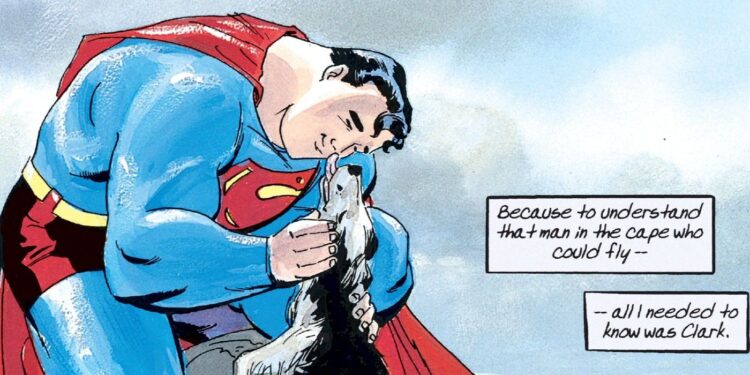
And I’d like throw a third one in the mix, because I’ve been thinking more about Superman for this than at any time before, which is saying something, and doing my best to shave the concept down, like how I do for one of my experiences, to see what it looks like at its core.
What is in the very center underneath everything? This is what I’ve been chewing on. There’s a lot going on with Superman. But when I strip away everything I can, my big take is that at the end of the day it’s all about Love. The Superman world and supporting cast allow you opportunities to tell stories about all kinds of love and compassion, too. Parent love, the love of your child, and for your child, friend love, pet love – for goodness sake – romantic love, unconditional love.
No one gets left out. Nobody gets left behind.
Superman protects everyone. – That’s love.
Superman helps everyone. – That’s love.
Superman believes in everyone. – That’s love.
My big take here is that for me, the one word is ‘love.’
Superman is love.
I know. Cornball with a capital C. But yeah. After a lifetime with Superman, and 4 years working on this episode, that’s what I got.
It’s all about love.
I’m definitely on that list of people who this character hopefully helped become a better person. I’m truly grateful to have had such a powerful source of inspiration.
This Superman in 3 pieces – Action, Hope, and Love.
[MUSIC SPACE]
And with that, Superman, – which means whatever counts as ‘your Superman,’ – For me that includes all the pieces – we talked about already – all of it becomes the next entry to the Perfectroium, the index of perfect things.
You can see all the entries to the Perfectorium, including this one, at the direct link for it, perfectshowpodcast.com/perfectorium.
Go to the show’s website perfectshowpodcast.com to see pictures and videos related to each episode, – this time I will of course put up these three pieces, as well as a copy of the framed version of Liam’s Samnee drawing, a few more pics from All Star Superman and Superman For All Seasons, and maybe some other photos from my failed episode attempts along the way if I find any good ones.
Speaking of which, a version of this episode at one point was just me listing favorite pieces of Superman stuff from pop culture but it just got waaay too long.
Even though that didn’t make it through to the final edit, I still want to mention one thing from it: this clip of the film The Iron Giant from 1999, a wonderful story about much of what I’ve been talking about here, actually.
And spoiler warning here for The Iron Giant – so if you haven’t seen it and don’t want to know anything then fast forward 30 seconds or so…
But near the end there’s this incredible moment where the Iron Giant flies up into the air, on his way to stop a missile and save everyone, and as he closes his eyes, we hear him think and then say, [CLIP – YOU ARE WHO YOU CHOOSE TO BE – SUPERMAN – TKTK]
It still gets me every dang time.
Okay.
Thank you to Liam Burke for coming on the show, showing me his Superman pic, and being patient with me as I figure out what I was doing with this episode. Look for his book Superheroes Beyond.
Thank you as well to Grant Morrison, Frank Quitely, Jeph Loeb, Tim Sale, and Chris Samnee for originally creating these three beautiful Superman pieces.
And thank you to Jerry Siegel and Joe Shuster, for creating the Man of Steel in the first place.
And then of course thank you to Ma and Pa Siegel and Ma and Pa Shuster for creating baby Jerry and baby Joe– okay okay, I’ll stop.
You can find the info and links for all the musical artists in the show notes and on this episode’s webpage, though special shoutout to Chris P for this episode who I found through Fiverr and Is responsible for the great guitar music I’ve been using throughout the episode.
Chris created longer pieces based on Some themes in the Superman soundtrack by David Fleming and John Murphy.
If you’ve been listening to the 1-2 minute long tracks on the soundtrack wishing there was more, Like I had been, you can find the full 8 minute track Chris made for me on the show’s YouTube channel, @theperfectshow all one word.
Chris Pecoraro’s Full Superman (2025) Guitar Music:
NEED LINK – TKTK
Luca Giannotti’s Superman (1978) Guitar Music:
NEED LINK – TKTK
As always, if you’d like to contact the show, you can email PerfectShowShow@gmail.com, and find me on any socials I’m on just at my name, scotmaupin. That’s Scot with one t and M-a-u-p-i-n.
This is the part where I remind you to subscribe if you haven’t already because these come out without any real warning, so it’s the best way to catch them when I drop them.
If you are enjoying these and want to drop the podcast a perfect rating or review, please do. It’s the easiest way to support the show.
I’m continuing to review other shows at this point in each episode, and today that other show is a podcast called Cover Lover.
Cover Lover is a show where host Liz takes a song she loves, plays a little bit of it, and talks about the song, any interesting backstory for the song, or for her with the song, and then features pieces of different covers of the song that she found interesting.
It’s of course right up my alley, and even though the episodes are short, like 15 – 25 minutes long each, they end up taking me hours to get though when I listen, because I wind up re-listening to the clips that Liz plays, and then pausing the show to go listen to full versions and go down my own rabbit holes of covers for each song. I basically work through the episodes in slow motion because the song choices are so so good each time.
Favorite episodes of mine are for the songs I’m Not in Love, The Air That I Breathe, No Surprises, and Your Song by Elton John.
I should also say that creator and host Liz’s full name is Liz Maupin – now I know what you’re thinking, I’ve finally given in to nepotism. Even though I’m the last person you thought would do it because I possess no real power, but no – this isn’t that.
I don’t know Liz, It’s possible that there may be some family connection somewhere up the tree, but I’ve never met her, we just happen to have the same last name and I really love this podcast she makes.
And I’m still saying ‘makes’ and not ‘made’ because even though it’s been almost a year since the last episode, I hear it’s possible for shows to go that long or *ahem* even longer between episodes and still come back and start up again.
So I’m keeping my hope alive and fingers crossed for more Cover Lover in the future, and now I’m getting my iPad out to leave the show a nice 5 star review and show how easy you can do it for the shows you listen to, too…
So here it is:
Rating: 5 stars.
Title: Cover Lover is Super – sorry, couldn’t pass that up for this episode.
Review: Liz makes an amazing show full of really eclectic music choices for both the subject of each ep and also the covers. I love listening to her music brain in podcast form and I’ve heard each episode 4 or 5 times now. Incredible show!
Okay, and, submitted.
This episode was recorded and mixed at Milky Way Studios in Oakland, CA.
And remember, you always have the ability to be more like Superman. Sure, none of us have Superman’s powers, but then again that’s not really what makes him Superman is it? Other people have taken his powers and they don’t act like Superman, meanwhile even without powers, Superman still does.
But of course I mean obviously – it would be pretty sweet to be able to fly around and shoot lasers out of your eyes.
Anyway, until next time, I’m Scot Maupin, and thanks for listening to The Perfect Show.
[Outro music – 50 eggs]
P.S. I asked Liam for his reaction to the new Superman movie and he was kind enough to send in this voice clip!
Liam’s reactions to Superman 2025:
And here are the videos for the guitar pieces on their own, which I also released as a separate mini-episode.
